

HIGHER EDUCATION IN KAZAKHSTAN
Overview of the education system in kazakhstan.
According to the Bureau of National Statistics of the Agency for Strategic Planning and Reforms of the Republic of Kazakhstan, at the beginning of the 2023-2024 academic year in the Republic of Kazakhstan, the number of operating higher education institutions amounted to 112 organizations, including 77 universities, including research, 14 academies, 10 institutes, and equivalent conservatories, higher schools and higher schools, 8 national higher education institutions educational institutions, 3 national research universities.
Over the years of independence, the state has implemented large-scale reforms in the higher education system to improve the quality of specialist training. In 2010, Kazakhstan became a participant in the Bologna process; qualification requirements for licensing higher education institutions were strengthened; a ban on the activities of university branches was introduced; in 2018, legislative changes were made to expand the academic and managerial independence of universities; 27 state universities were transformed into non-profit joint-stock companies; and the League of Academic Integrity was established as an independent organization with On January 1, 2019, distance learning was canceled, and in recent years, the rules for admission to universities for grants have been strengthened.
At the beginning of the 2023-2024 academic year, the total number of students at universities amounted to 635,157 people, of whom 592700 were enrolled in bachelor's degree programs, 36491 in master's degree programs, and 5966 in doctoral programs.
The total number of teaching staff at the beginning of 2022-2023 amounted to 36.4 thousand teachers, of whom masters made up 39%, candidates of sciences - 29%, associate professors - 13%, doctors of philosophy (PhD) - 10%, doctors of sciences - 7%, professors - 6% and doctors in the profile - 1%.
Structure of the education system in Kazakhstan
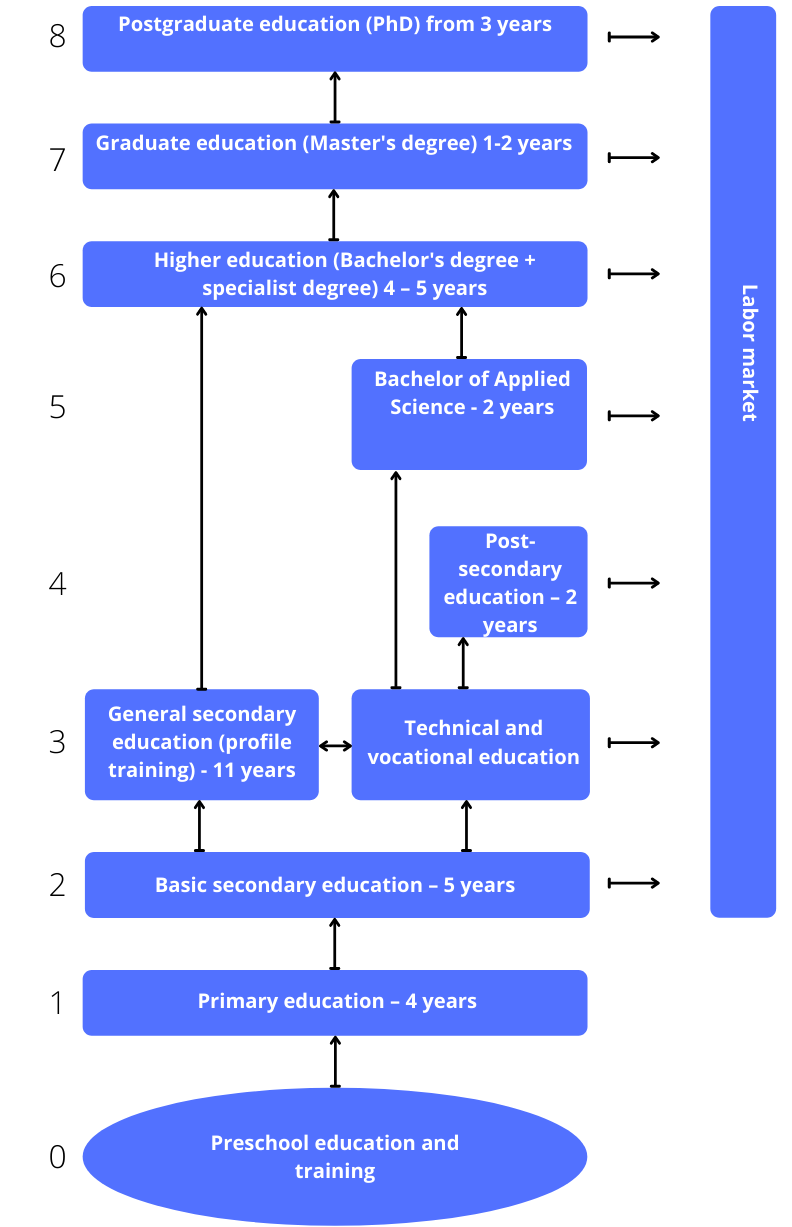
The education system of the Republic of Kazakhstan is characterized by multilevel and continuous development and includes the following levels of education:
- 0. Preschool education and training – 1/6 years
- 1. Primary education (4 years); entry - 6/7 years.
- 2. Basic secondary education; entry - 10/11 years.
- 3. Secondary education; entry - 15/16 years.
- - general secondary education;
- - technical and professional education: qualifications of a worker and a mid-level specialist, entry - 15/16 years;
- 4. Post-secondary education: qualifications of a worker with a high level of discharge; entry - 17/18 years.
- 5. Incomplete higher education – applied bachelor's degree; admission - 17/18 years.
- 6. Higher education: bachelor's degree, specialist qualifications for medical specialties; admission – 17/18 years.
- 7-8. Postgraduate education: Master's and PhD degrees.
Structure of higher educational institutions of Kazakhstan
The structure of higher and postgraduate education of the Republic of Kazakhstan is regulated by the Law "On Education" (dated July 27, 2007). With the signing of the Bologna Declaration in 2010, Kazakhstan is implementing a three-level system of higher education "Bachelor-Master- Ph.D.". This structure has found its legal consolidation in the Law of the Republic of Kazakhstan "On Education»:
1) Higher basic education – bachelor's degree program - with a duration of 4 years;
2) Postgraduate education, including the scientific and pedagogical direction of training-the master's program-with the duration of training in the profile master's program – 1 year, in the scientific and pedagogical – 2 years;
3) The program of preparation of doctors of philosophy (PhD), doctors in the profile-doctoral studies-after completion of master's programs. The duration of training is at least 3 years or more.
According to the Bologna Declaration, the introduction of a system of credits or credits ensures the recognition of educational programs. The introduction of credit technology of training is a significant contribution to the recognition of national educational programs at the international level, ensuring the mobility of students and teachers, as well as improving the quality of education and ensuring the continuity of all levels and stages of higher and postgraduate education. Consequently, all universities in the country use the Kazakhstan credit transfer model, developed according to the ECTS type. ECTS (European Credit Transfer and Accumulation System) is a universal system for measuring the academic load of a student during the development of an educational program or a separate course.
Admission to higher educational institutions of Kazakhstan
Admission to higher educational institutions of the Republic of Kazakhstan is carried out by the Standard Rules for admission to educational organizations implementing professional training programs of higher and postgraduate education, approved by order of the Minister of Education and Science of the Republic of Kazakhstan dated October 31, 2018. Persons with general secondary, technical vocational, post-secondary, and higher education are accepted to universities.
Admission to universities is carried out according to the results of passing the Unified National Testing (UNT) based on a state educational order or a paid basis.
According to the Rules of the unified national testing and the provision of public services "Issuance of a certificate of passing the unified national testing", graduates can take the UNT 5 times. Applicants who have passed the UNT from May to July can participate in the competition for a state educational grant award.
Integration of Kazakhstan's education system into the European Higher Education Area
In March 2010, Kazakhstan officially joined the Bologna Declaration and became the 47th member of the European Higher Education Area and the first Central Asian state to be recognized as a full member of the European Educational Area.
The transition to a multi-level training model in accordance with the Bologna Process is fully completed. According to the National Report on the State and Development of the Education System of the Republic of Kazakhstan (based on the results of 2019), undergraduates are trained in 118 universities of the country, where 32,527 people study, of which 16,220 study at the expense of the state order. The graduation rate of undergraduates with a defense is 92%. Currently, the system of higher education in Kazakhstan, which has implemented the American-style credit system, is changing, as the European Credit Transfer and Accumulation System (ECTS) , the pan-European system of accounting for students' academic work during the development of an educational program or course, is being introduced. The new ECTS Guidelines approved at the Yerevan Conference of European Ministers of Education on May 14-15, 2015 are being implemented. In recent years, the academic mobility of teaching staff and students has been actively developing. Exchange programs are financed from the state budget and the universities' own funds.
Impact of COVID-19 on the activities of universities in Kazakhstan
The COVID-19 pandemic has made significant adjustments to the educational process. All universities in the country were forced to switch to an online learning format in order to adapt to the new reality. Although the pandemic has had the greatest impact on higher education on a global scale, it is worth noting that it has become one of the few areas in Kazakhstan prepared to transfer its processes to a distance format.
Since March 16, 2020, 116 universities of the country have switched to distance learning. The vast majority of students studied at home, but 5 thousand Kazakh students and 4 thousand foreign students remained in the dormitories at the place of study, as the conditions for distance learning were created in the dormitories.
The country's universities have already had some experience in implementing distance learning technologies in the learning process, as some universities used a mixed form of education, while others used a distance-learning format. Universities use special platforms, such as ZOOM, Platonus, Moodle, Microsoft Teams, Cisco Webex, and others. A number of universities use self-developed platforms. In the difficult situation of the pandemic, universities supported their employees and teaching staff in organizing training courses. All universities and colleges have HelpDesk, a system that provides technical support to students and teachers. Regular surveys of students, faculty, and staff on satisfaction are conducted to obtain up-to-date information and improve the educational process.
Study in Kazakhstan
- Share on linkedin
- Share on instagram
If you want to study in Kazakhstan, then you need to know which of its universities are right for you. Times Higher Education World University Rankings take the top institutions in the world, and look at their performance across all of their core objectives: teaching, research, knowledge transfer and international outlook.
There are over 100 universities in the country but Kazakhstan has two universities in the overall Times Higher Education World University Rankings . The highest-ranking university in Kazakhstan is Al-Farabi Kazakh National University , which is ranked at number 801–1000.
Choosing where to study for a degree in Kazakhstan is one of the biggest decisions you will ever make. THE ’s student resources are here to help you make the right choice, particularly if you want to study abroad. Explore the universities of Kazakhstan below - we’ve pulled together some information that we hope will help you to decide where to study.
Use the map to see where Kazakhstan’s top universities are located, and if any institutions are of particular interest, you can click on their name, or the “explore” button, to find out more. We’ve also pulled in information about how much Kazakhstan is investing in its higher education, and also how many people live there.

Best universities in Asia
Find the top universities in Asia, using Times Higher Education ’s rankings data

Best universities in Malaysia
Explore the best universities in Malaysia, based on data collected by Times Higher Education

Best universities in Tokyo
Explore the best universities in Tokyo based on data from the Times Higher Education Japan University Rankings

Best universities in Shanghai
Explore the best universities in Shanghai based on data collected by Times Higher Education
Explore other universities in Kazakhstan

World-ranked universities with the most international students

The best universities in Australia and New Zealand
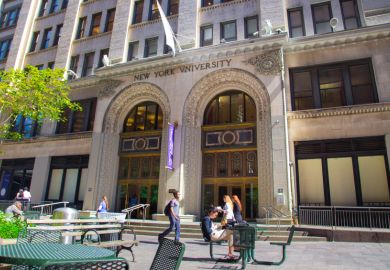
25 US universities with the most international students

An unexpected journey

British student criticises competitive UK medical courses after securing university place in Italy

World’s most international universities: the student experience

The international experience at the London School of Economics
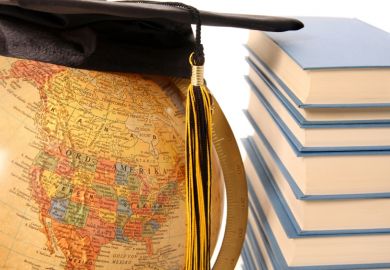
Find every English taught degree at a top university on this interactive map

10 top universities in the United States you can still apply to

Best universities in Europe 2016: Where can you get value for money?

Canada is the most popular destination for international students
International students put Canada at the top of the list of preferred study-abroad destinations, poll discovers

International perspective: a South African studying in the Netherlands
This site uses cookies to optimize functionality and give you the best possible experience. If you continue to navigate this website beyond this page, cookies will be placed on your browser. To learn more about cookies, click here .
British Council Kazakhstan
- Teach English
- Show search Search Search Close search
- Our work in arts and education
- Our work in education
Internationalisation of Higher Education in Kazakhstan
The British Council works to support the reforms being implemented by the Government of Kazakhstan to modernise and internationalise the country’s higher education system.
We provide training and capacity building support to higher education institutions in Kazakhstan. Since 2015, we have delivered over 70 workshops and events engaging more than 1,900 researchers, faculty and administrative staff at universities across Kazakhstan.
In 2017-2018 the British Council carried out a piece of research into internationalisation strategies at regional universities in Kazakhstan, looking at what has been achieved, the challenges faced and identifying best practice. We also provided training to senior university managers.
In this section you can find materials from the management training workshop, as well as a report produced as a result of the research into internationalisation strategies at regional universities.
INTERNATIONALISATION at Kazakhstani Regional Universities .
Internationalisation in Kazakhstani universities: learning from the regions.
Management training workshop
Documents available for download:
- Action plan notes
- Action learning
- Autonomy and governance
- Internationalisation strategy
- Top 200 Universities in the World
- Top 200 Universities in North America
- Top 200 Universities in Latin America
- Top 200 Universities in Europe
- Top 200 Universities in Africa
- Top 200 Universities in Asia
- Top 50 Universities in Oceania
- Top 200 English-speaking Universities
- Top 200 Spanish-speaking Universities
- Top 200 Arabic-speaking Universities
- Top 200 Universities on Facebook
- Top 200 Universities on Twitter
- Top 200 Universities on Instagram
- Top 200 Universities on YouTube
- Top religiously affiliated Universities
- Universities in North America
- Universities in Latin America
- Universities in Europe
- Universities in Africa
- Universities in Asia
- Universities in Oceania
- A-Z Guide to University Programs, Courses and Degrees
- University Guides and Articles
- Universities on Facebook
- Universities on Twitter
- Universities on Instagram
- Universities on YouTube
- Universities on TikTok
- Universities on LinkedIn
- Free online courses by OEG Universities
- Higher Education-related Organizations
- Directory of University Libraries
- Religiously Affiliated Universities
- Higher Education Glossary
- A-Z list of World Universities
Universities in Kazakhstan
Higher education in kazakhstan.
What are the most popular Universities and Colleges in Kazakhstan? uniRank answers this question by publishing the 2024 Kazakhstani University Ranking of 104 Kazakhstani higher-education institutions meeting the following uniRank selection criteria:
- being chartered, licensed or accredited by the appropriate Kazakhstani higher education-related organization .
- offering at least three-year bachelor's degrees or postgraduate master's or doctoral degrees
- delivering courses predominantly in a traditional, non-distance education format
2024 Ranking of Kazakhstani Universities New
Explore the uniRank League Table and University Ranking of 104 Colleges and Universities in Kazakhstan
2024 Sub-rankings by Regions New
The Republic of Kazakhstan is divided into 14 regions (Kazakh: oblystar), which are further subdivided into districts (Kazakh: aýdandar), and 4 autonomous cities. The vast majority of higher education institutions meeting the uniRank selection criteria are located in Almaty city. The following uniRank league tables or sub-rankings take into account all regions and autonomous cities which include at least 2 Kazakhstani higher education institutions meeting the uniRank selection criteria.
Featured Universities New
Unlock Your University's Global Potential: Spotlight Your Institution on UniRank for International Recognition. Feature your University here. Get in Touch Today . Discover More Information Without Any Obligation!
Share Universities
Interesting? Don't forget to share these Kazakhstani Universities with your friends now.
Related Kazakhstani University lists
- Oldest Universities in Kazakhstan Explore the most traditional and long-established Kazakhstani post-secondary institutions according to uniRank.
- A-Z Universities in Kazakhstan Search for Kazakhstani higher education institutions in alphabetical order from A to Z.
- Kazakhstani Universities by Town Looking for tertiary institutions located in a particular Kazakhstani town or city? Start your search on this uniRank webpage.
- Top Public Universities in Kazakhstan Discover Kazakhstani public higher education institutions with potentially lower tuition fees on this uniRank webpage.
- Top Private Universities in Kazakhstan Find out about Kazakhstani private higher education institutions available in the uniRank selection.
- Top Non-Profit Universities in Kazakhstan Explore Kazakhstani not-for-profit higher education institutions with potentially lower tuition fees on this uniRank webpage.
- Top For-Profit Universities in Kazakhstan Looking for Kazakhstani for-profit higher education institutions? Check out this uniRank list.
- Top Kazakhstani Universities on Facebook See which tertiary institutions in Kazakhstan have the most followers on Facebook, according to uniRank.
- Top Kazakhstani Universities on Twitter Discover the Universities in Kazakhstan that are most followed on Twitter, according to uniRank.
- Top Kazakhstani Universities on Instagram Find out which post-secondary institutions in Kazakhstan are the most followed on Instagram, according to uniRank.
- Top Kazakhstani Universities on YouTube Explore the Universities in Kazakhstan with the most subscribed channels on YouTube, according to uniRank.
Since 2005, UniRank provides valuable information and resources to help you explore and make informed decisions about Emirati universities and their online presence.
© uniRank since 2005
University rankings, universities by country, free online courses, universities on social media, more resources.
About | Methodology | Contact | Advertise | Terms | Privacy | Change privacy settings
©uniRank 2005-2024
Education in Kazakhstan
Education system, secondary education, technical and vocational education, higher education.
Kazakhstan's education system helps to gain knowledge that enables to get a profession later. In the Republic of Kazakhstan, education is divided into general and vocational. School (secondary) education is divided into the classes: primary (grades 1-4), basic and senior. Primary vocational education (after the 9th grade) can be obtained in the specialized lyceums, while secondary vocational education can be received in the specialized schools or colleges.
The education system in the Republic of Kazakhstan consists of the several education l evels :
- preschool education and training;
- primary education;
- basic secondary education;
- secondary education (general secondary education, technical and vocational education);
- post-secondary education;
- graduate education;
- post-graduate education.
The education system is supervised by the relevant ministries: Ministry of Education of the Republic of Kazakhstan and Ministry of Science and Higher Education of the Republic of Kazakhstan.
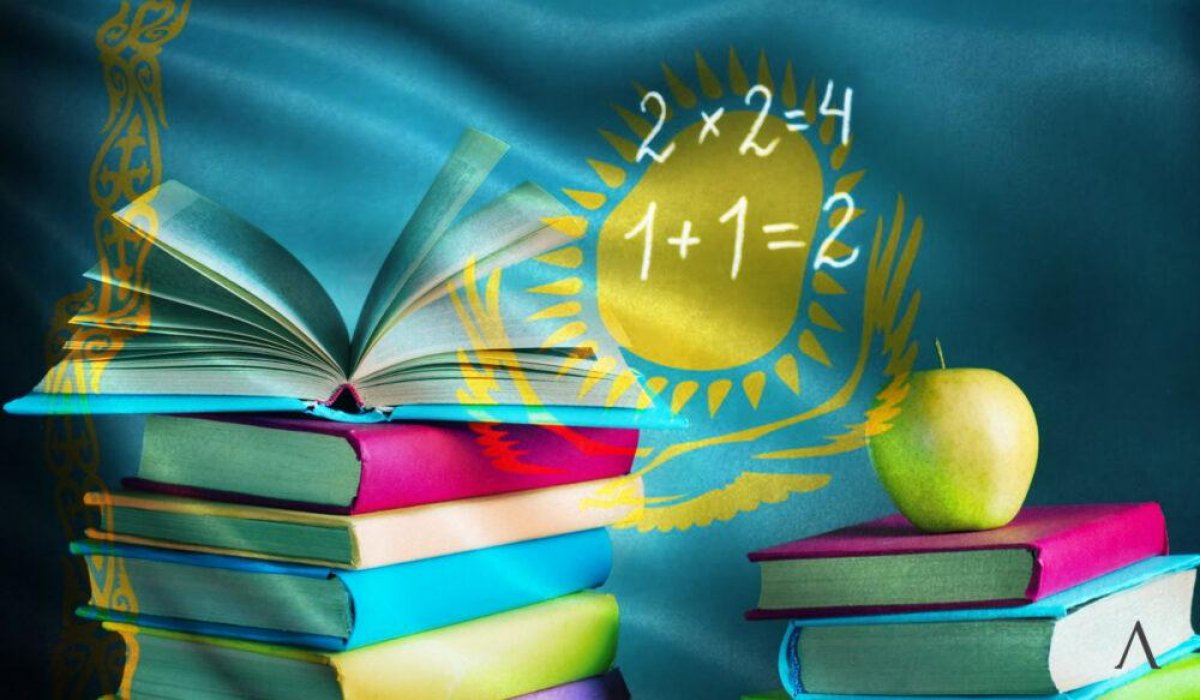
Secondary education in Kazakhstan is compulsory and includes primary, basic secondary (9 grades) and general secondary (11 (12) grades) education. There is also a vocational and secondary vocational education.
Children aged 6 years old are admitted to the first grade of school. Education in schools of Kazakhstan is comprised of 3 levels: primary (1-4 grades), basic (5-9 grades) and senior (10-11 (12) grades). Educational programs are developed for comprehensive development of capabilities of the especially gifted students and are implemented in the specialized schools for gifted children.
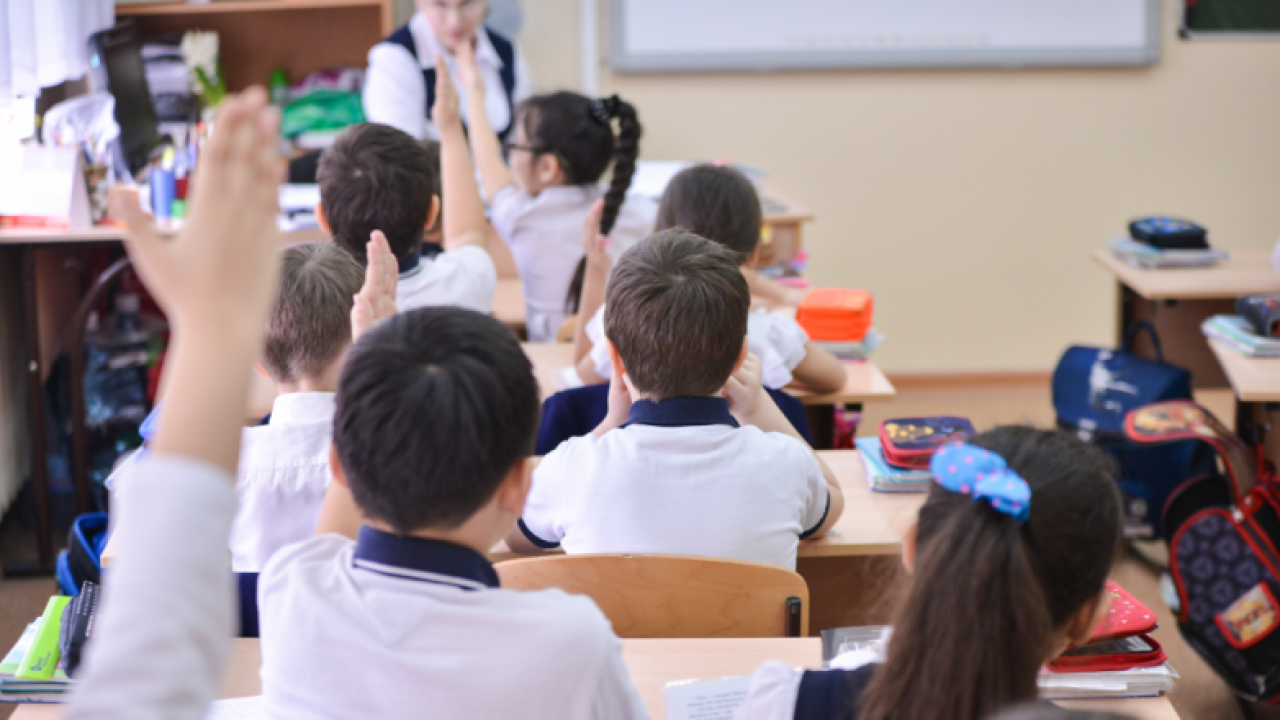
Technical and vocational education is aimed at training of qualified workers and middle-ranking specialists and is delivered in the academies, colleges and tertiary colleges based on the basic secondary and (or) general secondary education.
The technical and vocational education in the country is delivered in the 772 technical and vocational education organizations, of which 446 are public and 326 are private. The total amount of students in technical and vocational education organizations is 517.3 thousand people, of which 312 thousand people have studied under the state order.
The major tasks of technical and vocational education are the following:
- the training of qualified workers and middle-ranking specialists;
- expanding the coverage of free-of-charge technical and vocational education;
- increasing the target state order at the request of the enterprises (10 thousand people annually);
- increasing the amount of scholarships for students of technical and vocational education organizations;
- creating conditions for increasing the accessibility of technical and vocational education;
- improving financial stability and targeted support of technical and vocational education;
- improving corporate governance of technical and vocational education;
- organizing and developing social partnership in the system of technical and vocational education;
- creating equal conditions and barrier-free access for students with special educational needs;
- ensuring consistency and continuity between the levels of education;
- expanding international cooperation in the field of personnel training and re-training of in the technical and vocational education organizations.
In order to ensure the accessibility of technical and vocational education, since last year, the state order has been placed under the principle "money follows the student" . Earlier the admission to the colleges was carried out according to the allocated places under the state order and currently the fellows could select the colleges and specialties as per their will. These measures ensure the transparency of state order distribution and admission of applicants to the colleges.
The applicants will be able to apply to the colleges through the Egov.kz portal or directly to the college. The applicants can choose up to 4 specialties and up to 4 colleges.
All the school graduates will be given an opportunity to undergo professional diagnostics through the education departments’ information systems. As a result, the applicants will get recommendations to select a particular specialty and be familiar with the datasheets of recommended industries.
The competition is conducted through the education departments’ information systems based on the diploma average score under required and vocation-related disciplines.
Also, the new mechanism is aimed at 100% coverage of the graduates with free-of-charge college tuition under highly demanded specialties.
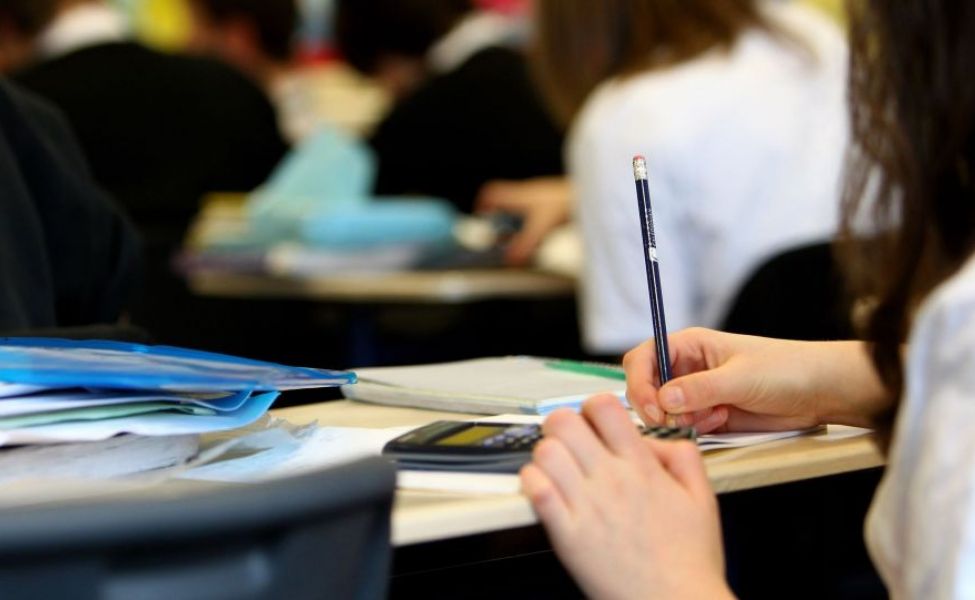
Currently, higher education in Kazakhstan is at the stage of dynamic development that is dictated by scientific and technological progress requirements. Recently, the republic has undertaken global measures to upgrade and reform the education through introducing top notch teaching methods and developing up-to-date infrastructure and providing full-fledged student support.
Higher education structure and study format
Today, the Kazakhstani higher education system in the context of the Bologna process parameters is of the following structure:
- Baccalaureate is higher educational programs intended for cohort study with awarded bachelor's degree under relevant specialty.
- A scientific and pedagogical direction with a study period of at least two years;
- A discipline direction with a study period of at least one year.
- a scientific and pedagogical direction with a study period of at least three years;
- a discipline based direction with a study period of at least three years.
Today, the number of universities in the country is 120 , of which national universities – 11 , state – 29 (non-profit joint-stock companies), international university – 1 , corporate universities – 16 , private – 48 , autonomous – 1 (Nazarbayev University), non-civilian – 14 .

Study format
Today, Kazakhstanis have the opportunity to receive higher education under the following study format:
- Full time or classroom study. Under this format a student must attend seminars and lectures in classrooms.
- Distance learning. Internet based learning. Assignments and educational materials are posted online for self-study. Online consultations are upon request. Diploma projects defense is the higher educational institution intramural conducted.
The most important aspect of higher education development in the country is the creation of a culture of academic integrity. For this purpose, the League of Academic Integrity had been created in 2018 as an independent and self-established organization following the example of the Ivy League in the USA, the Russell Group in the UK and C9 in China.
Admission to universities
The citizens who have acquired general secondary or technical and vocational education or post-secondary education also have the opportunity to receive higher education. There is possibility to go through a shortened educational programs process with an accelerated study period for the persons with acquired technical and vocational, post-secondary or higher education with re-crediting the grades and crediting the earlier grades of disciplines accomplished provided for the sufficiency of the scope of study and continuity of the educational program.
In Kazakhstan, admission to universities is based on the Unified National Testing (UNT) results. Since 2017, they have been passing overall school exams attestation to obtain a certificate of secondary education, “Altyn Belgi” (with honors) and UNT score for admission to universities and receiving government grants for studying at universities. Since 2019, there is a possibility for school graduates to take the UNT four (4) times a year.
The UNT in electronic format is carried out in the following terms:
- from January 10 to February 10 (one attempt);
- from March 1-31 (one attempt);
- from May 16 to July 5 (main UNT for receiving a government grant, two attempts);
- from August 10 to August 20 (one attempt).
Applications are accepted (online) on the website www.testcenter.kz of the National Testing Center within the following deadlines:
- from December 20 to January 6 of the calendar year for individuals;
- from February 20 to March 10 of the calendar year for individuals;
- from April 28 to May 14 of the calendar year for individuals;
- from July 20 to July 30 of the calendar year for persons.
Admission to the university after a re-test is done is possible only on a paid basis; and the government grants are distributed upon passing the main UNT (in May-July of the year).
At the end of a bachelor's program study a student receives in-depth knowledge of occupation. Studying in master programs is of advanced specialty. In Kazakhstan, students can study in one specialty at the bachelor's program, and continue their graduate studies at the master program in another specialty. At the end, the student has the opportunity to master two specialties and hold down the financial and time costs of receiving the second higher education.
Studying in higher educational institutions of Kazakhstan is organized both on the basis of government educational order and at the student’s own expense. The major of government educational grants is allocated for the study of technical specialists and teachers. Almost half of the total number of educational grant holders are representatives of a socially vulnerable group of the population. In addition to the government educational grants, the universities expand an access to receiving the higher education through corporate grants and tuition allowances.
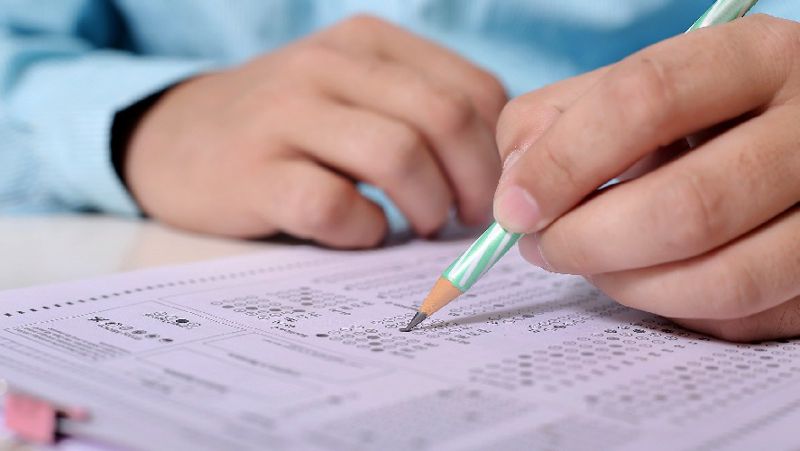
Government scholarship
To encourage the school youth and provide the opportunity to obtain higher education at universities within the country, the Government will allocate scholarship to the students. The government scholarship is divided into:
- It is paid to the students who accomplished the session with “good” and “excellent” grades.
- Increased (+15% to the basic). It is assigned to the students who accomplished the session with “excellent” grades.
- Presidential (+100% to the basic). Students with special merits such as creative, scientific research, sports, social and cultural etc. could apply to receive a presidential scholarship.
The government also allocates increased scholarships for students with disabilities and those who are without parental custody.
What are the grants the one could receive for higher education programs study in Kazakhstan?
There are different higher education grant types in Kazakhstan:
Government general grants. The republican budget funds are allocated among the country's universities.
Grants for the youth from western, densely populated and newly created regions of the country . They are allocated according to the designated list of country’s universities and the republican budget funds are allocated.
Government target grants. They are allocated in advance to the country’s universities and can be implemented only in a particular educational institution.
Mayor office grants. These are the local executive body funds. The students study in specialties at the universities that are in short supply in the region.
Rector's grants and scholarships. They are special achievements and merits awarded at the university.
There are specific conditions for receiving the grants to study in each particular university. There are also grants and scholarships from public foundations and organizations. They can be awarded based on competitive arrangements in the separate universities or awarded to the high achieved students throughout the country.
“Bolashak" program
Kazakhstanis have the opportunity to receive higher education abroad on a paid or free basis. Many European universities are welcoming to admit students from Kazakhstan. An international scholarship "Bolashak" has been established by government of the Republic of Kazakhstan for Kazakhstanis who have intention to receive a doctorate or master's degree abroad.
An international scholarship “Bolashak” has become a unique initiative that provides an access the talented youth to the world top universities. Over the 30 years of scholarship implementation a pool of more than 12.5 thousand highly qualified specialists has been formed in the country amongst the scientists, engineers, doctors, government managers and other professionals. The scholarship graduates have contributed to the building of international relations, Kazakhstan’s integration into international community and transfer of international knowledge and technology to the country.
The Program graduates have played a key role in the launch of the flagship of Kazakhstan’s higher education - Nazarbayev University, Nazarbayev Intellectual Schools, Astana International Financial Center, a number of National Medical Centers, AstanaHub, Astana IT University, International Center for Green Technologies and Investment Projects.
Today, the Kazakhstanis have a unique opportunity to gain advanced knowledge in more than 200 of the world top universities in 27 countries, including those included in the highly reputed Ivy League and Russell Group.
In its current implementation the “Bolashak” program has prepared highly qualified specialists for the economy of Kazakhstan in such current specialties as urban planning, energy systems, hydrology, nuclear industry, cybersecurity, robotics, virology, emergency prevention and response, etc.
To address the request of the Head of State to reorient the “Bolashak” program, in 2022, 60% of scholarships were allocated for the engineering and technical specialties study and internships. In 2023, to create high-quality competition environment among the engineering and technical workers through the increased number of applicants, a preferential category - “Engineering and technical workers for a master's degree” was introduced which provides for foreign language prerequisite study for up to 12 months.
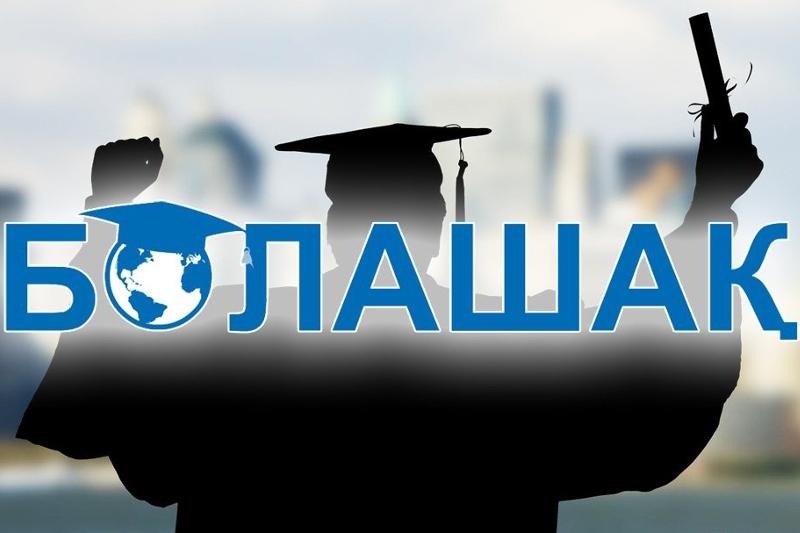
Higher and postgraduate education
State compulsory education standards
Beginning this year academic independence of state compulsory education standards (SCES) has been expanded. Currently, universities are authorsied to revise the content of a number of compulsory disciplines and independently regulate the number of credits for basic and profile disciplines.
The history of Kazakhstan will be studied from the ancient times to the modern period. Also, the universities may independently incorporate the amendments into the content of general education disciplines cycle with regard to the specifics of the directions.
It is provided to recognize the micro- qualifications learning outcomes, also such notions as "nano-credit" and "building the degree" have been introduced.
The "Mamandygym-bolashygym” project has been launched, which provides for strategic consolidation of efforts of the universities, mayor offices and business structures. In each region, basic universities had been determined, wherein foresight studies of the personnel requirements of the region have been conducted, and regional vocation maps have been developed.
The rules of dual study in the HEIs have been developed. Today, over 5 thousand employment agreements were concluded with the employers who provide production premises for vocational practice. More than 6 thousand students has been covered with dual study. Paid practice is also provided by the enterprises.
A number of measures has been taken to strengthen pedagogical education.
A law of the RK “About vocational qualifications” has been adopted for the certification system development . Now all the graduates who have completed vocational study under vocations that are included in the register of vocations of the MLSPP shall go through certification for the skills and qualifications.
A new form of study has been introduced that is online study . This form will allow to provide online study from the enrollment document receipt until the student graduation.
Digital ecosystem in the HEIs .
Digital ecosystem in the HEIs has been strengthened. All the universities were connected to the LMS platforms (Platonus, Univer, Moodle, etc.). There are DDoS attack protection systems, an electronic library, and electronic document circulation.
Virtual labs have been created. A model of digital universities has been developed, and this year it is planned to launch this model in the pilot mode in the premises of 2 universities: KazNRTU named after K. Satpaev and EKTU named after D. Serikbaev.
The digital university model covers 4 main aspects. This is: digital transformation of educational activity, campus and IT infrastructure, scientific activity, as well as single digital platform services development.
To develop cooperation and apply innovative education technologies, negotiations were held and Memorandums were signed with such large companies as Coursera, "Huawei Technologies Kazakhstan” LLP, Binance Kazakhstan.
Huawei ICT Academy on the basis of 26 universities to provide certified Huawei courses was created. It is planned to deploy this practice and create these Academies in 50 universities. Huawei has encouraged the students to obtain Huawei certificate and has developed the talents with practical skills for the ICT industry and society.
In 2023, for the purpose of implementing educational programs on block-chain technologies in universities, a Memorandum on partnership on the provision of materials was signed between the Ministry and the company BN KZ Technologies Ltd.
Under the support of Binance Kazakhstan, about 350 teachers of ICT faculties of 22 universities passed the blockchain technology training. It is planned to train more than 40 thousand specialists in blockchain technology.
To develop cooperation and expand access of the Kazakhstani citizens to the courses of lead foreign professors, a Memorandum of Understanding was signed between the Ministry of Science and Higher Education, the Ministry of Digital Development, Innovation and Aerospace Industry of the Republic of Kazakhstan and Coursera Company .
Today, about 100 Coursera courses have been translated into Kazakh and Russian. A real students' online study re-crediting mechanism has been implemented. More than 20 thousand students of 25 universities were trained under the unique Coursera courses.
A Memorandum of Understanding between the Ministry of Science and Higher Education and Amazon was signed to involve the IT students in the OpenSearch project and gain industry-level experience .
This is the first pilot, which is aimed at creating the basis for the future programs. On the part of Amazon employees OpenSearch provides support in the form of documentation, tools, processes, knowledge sharing sessions, etc. There are 100 best students taking part in the OpenSearch project.
The internalization is expanding . The number of foreign students has been increased for 3 years (in 2020 - 28,169 people, in 2021 - 28,968 people, in 2023 - 27,756).
International cooperation
Branches of National Research Nuclear University MEPI in the premises of KazNU named after al- Farabi, Russian University of Oil and Gas named after Gubkin in the premises of Atyrau University of Oil and Gas named after S. Utebayev, University of Economics in Bydgoszcz (Poland) in the premises of Shakarim University, Herriot-Watt University (Scotland) in the premises of Aktyubinsk Regional University named after K. Zhubanov, Marke Polytechnic University in the premises of Zhetysu University named after I. Zhansugurov.
A strategic partnership model between the North Kazakhstan University named after M. Kozybaev and the University of Arizona by concluding an agreement for consulting services in academic, scientific and financial activities, as well as implementation of joint educational programs and double degree programs has been implemented.
During the visit of the President of the Federal Republic of Germany, Frank-Walter Steinmeier, an agreement was signed on the establishment of the Kazakh-German Institute of Sustainable Engineering (a consortium of German universities) in the premises of Yessenov University.
There are about 243 joint educational programs and double-diploma programs implemented by universities.
Since 2019, 550 educational grants for foreigners are provided as part of the scholarship program .
Annually, 200 foreign scientists and 570 students funded from the RB are sent to study as part of academic mobility.
Since 2021, the opportunity to take the UNT twice to participate in the competition for the award of an educational grant has been provided . For the qualitative selection of applicants for teacher training, the UNT threshold score has been increased from 60 to 75 points.
For the first time since September of this year, orphans and students left without parental care, as well as persons with disabilities of groups I and II will be reimbursed by the state for the cost of living in dormitories in the amount of 29 times the MCI or 100,050 tenge. The cost of living in dormitories will be compensated which is a significant financial support for the specified student categories.
To determine the degree of student participation in the public life of higher and post-graduate institutions and volunteer activities, it is planned to introduce an integrated social performance average score (Great point average, GPA). In addition to the academic achievements of students, also social activity, research skills and participation in the volunteer movement at the regional, republican level will be taken into account.

Human Rights Dissemination in Central Asia pp 61–71 Cite as
Transnational Higher Education—The Case of Kazakhstan
- E. Varpahovskis 3 &
- A. Kuteleva 4
- Open Access
- First Online: 04 May 2023
893 Accesses
Part of the book series: SpringerBriefs in Political Science ((BRIEFSPOLITICAL))
In the wake of the collapse of the Soviet Union, higher education in Central Asia started to rapidly internationalize. The work of transnational higher education institutions (THEIs), including branch campuses and schools sponsored by international organizations, allows the Central Asian states to de-monopolize and diversify sources of knowledge and technologies. Human rights education is one of the new fields of research and teaching introduced through the curricula of THEIs in Central Asia. Using the case of Kazakhstan, we analyze the proliferation of courses related to human rights in THEIs. Our findings show that despite the presence of such courses in some THEIs, stakeholders such as the state and the universities themselves demonstrate little if any interest in human rights education. As a result, human rights are only taught at THEIs in Kazakhstan to a limited extent. We suggest further ways to explore this phenomenon in Kazakhstan and other Central Asian states.
- Transnational higher education
- Human rights
- Central Asia
Download chapter PDF
1 Introduction
The demise of the Soviet system and ideology toppled the Soviet—de facto Russian—monopoly in higher education. The Central Asian republics of Kazakhstan, Kyrgyzstan, Tajikistan, Turkmenistan, and Uzbekistan had to remodel their national systems of higher education to adapt to new socioeconomic circumstances (Smolentseva et al. 2018 ). While all five states have struggled with the Soviet path dependency and enduring legacies (Azimbayeva 2017 ), they managed step by step to reform their higher education systems. This was not a linear process, but internationalization has become a key factor in the reform efforts and continues to be one of the major policy priorities. The five states at least partially adopted the European Bologna Process, launched and expanded academic and student mobility programs, globalized education by inviting international universities to set up their branches, and introduced new disciplines, such as marketing and business management. In Central Asia, this was a state-driven process with national leaders aiming to obtain modern technologies and improve human resources to ease the post-socialist transition (Varpahovskis and Kuteleva forthcoming).
As scholars of transnational education and soft power point out, inviting foreign institutions to establish a presence in the country can have an impact on the local culture and values (e.g., Altbach and Peterson 2015 ; Bertelsen 2012 ; Wojciuk 2018 ; Knight and de Wit 2018 ). The transformation of Central Asian education systems through opening up to foreign institutions is intriguing, as in addition to technological and market-oriented specializations, these institutions have introduced value-oriented subjects and, in particular, human rights education. The scholarship exploring the role and impact of THEIs on human rights education is scarce and fragmented (e.g., Steiner 2002 ; Ó’Cuinn and Skogly 2016 ; Miller‐Idriss and Hanauer 2011 ), whereas studies focused on the Central Asian republics as receivers of international human rights education via THEIs are almost absent. This study seeks to address this gap by exploring the role of THEIs in Central Asia based on the case of Kazakhstan. The following sections discuss the conceptual and methodological framework of this study, present the key results, and highlight avenues for future research.
2 Transnational Higher Education Institutions: Global Phenomenon and Regional Practice
In the context of globalization, higher education is no longer limited to national societies but transcends borders. Despite being intuitively obvious, there are competing interpretations of the concept of “transnationality” in higher education. Transnational higher education institutions have different ownership structures, objectives, strategies, and types of students. Importantly, the legal status of THEIs varies from country to country as well, and while some states welcome THEIs and offer them a lot of freedom, others strictly monitor whether THEIs conform with national regulations and restrict curricula development in particular study fields.
In this study we adopt the definition of THEIs offered by Varpahovskis ( 2021 ), which captures the notion of “transnationality” in higher education based on its institutional and pedagogical features. As such, we classify a HEI as transnational if its ownership and/or management is designed and controlled by citizens and/or organizations from a foreign country. The pedagogical features include using a foreign language or languages as the medium of instruction, adopting foreign teaching materials and course designs, and employing a distinctive teaching philosophy. Transnational higher education institutions not only address the labor market needs of host countries and contribute to local internationalization of the education agenda, but they also promote intercultural dialogue and cross-cultural understanding.
Since independence, the five Central Asia states have made consistent efforts to modernize and reform their education systems in alignment with the broader social, economic, and political transformations. In the realm of higher education, internationalization has become one of the key priorities. Today, Central Asia hosts a total of 65 THEIs (see Table 1 ). Universities from Russia, Turkey, Germany, the US, the UK, and other countries have established branches in Central Asia. Not all Central Asian THEIs are linked to a parent institution abroad, however. The OSCE Academy in Kyrgyzstan and the University of Central Asia (UCA), with its branches in Kyrgyzstan and Tajikistan, are cases in point. The obvious outliers are Turkmenistan and Tajikistan. The two THEIs that operated in Turkmenistan—a branch of the Gubkin Russian State University of Oil and Gas (2008–2012) and the International Turkmen-Turkish University (1994–2016)—abruptly lost their education licenses and were closed down by the decree of President Gurbanguly Berdimuhamedow. Tajikistan made an exception for branches of four Russian HEIs and UCA’s Khorgos Campus (opened in 2017, but at risk of losing its education license in 2022). In contrast, Kyrgyzstan has rather liberal regulations for accrediting, registering, and licensing new HEIs, including transnational ones. The governments of Kazakhstan and Uzbekistan support the growth of transnational education but tightly regulate and control its providers. For instance, Kazakhstan revoked the license of THEIs that included religious courses in their curricula (see Vilkovski 2011 on the Kazakh-Kuwaiti University) or failed to satisfy local academic quality assurance requirements (e.g., the Kazakhstani-Russian University).
3 International Human Rights Education: A Conceptual Frame
The Universal Declaration of Human Rights (UN 1948 ) is the first formal international instrument to describe education as a means of disseminating human rights (Paragraph 2, Article 26). Hence, as early as 1948, the principle of human rights education was a means of promoting these rights, and education became an integral part of human rights discourse. The UN Declaration on Human Rights Education and Training defines human rights education as encompassing all “educational, training, information, awareness-raising and learning activities aimed at promoting universal respect for and observance of all human rights and fundamental freedoms and thus contributing, inter alia, to the prevention of human rights violations and abuses by providing persons with knowledge, skills and understanding and developing their attitudes and behaviors, to empower them to contribute to the building and promotion of a universal culture of human rights” (UN General Assembly 2011 , p. 3). Yet, a single definition of human rights education cannot reflect the diversity of ways in which people around the world understand and practice their rights and respect for the rights of others, and the importance they attach to them (Dufourt 2021 ). In this sense, the key to the definition of human rights education lies in its purpose because, regardless of methodology or context, it always aims at developing a culture of human rights (Dufourt 2021 ). The essential components of such a culture therefore inform the general objectives of human rights education. This lack of conceptual clarity opens the door to a problematic all-inclusiveness and on the other, it makes it possible to add educational activities and programs aimed at promoting the equal dignity of human beings to the curricula of various disciplines, ranging from political science and sociology to mining engineering and computer science.
4 THEIs in Kazakhstan: A Case Study
4.1 methodology.
Kazakhstan, with its population of more than 18 million, has 122 HEIs as of the 2021-2022 academic year (Kapital.kz 2022 ). Among them are 14 THEIs: six are affiliated with Russia, three with the US, two with Turkey, and the UK, Germany, and Egypt each have a single representation. The UCA campus in Tekeli, several Russian HEIs, and US-affiliated branch campuses were not included in our calculations since their status could not be confirmed for the 2021-2022 academic year. We based our selection of THEIs on the study by Varpahovskis ( 2021 ) (see Table 2 ).
Very few of the THEIs located in Kazakhstan have a strong humanities and social sciences orientation. Instead, most of them are either STEM only or offer mixed curricula with an explicit leaning toward STEM subjects. We examine the publicly available curricula of each THEI currently operating in Kazakhstan to determine whether they offer human rights-related courses and programs. The degree of international human rights teaching is presented in our research summary in Table 2 . We marked those programs that at least mention international human rights in their curricula with “yes”, even when only a fraction of a course touches upon human rights. The “Details” column in Table 2 indicates the extent to which human rights are taught as part of human rights education endeavors in the selected THEI.
4.2 Human Rights Education and Country Affiliation of THEIs
Descriptive analysis of Kazakhstan-based HEIs showed that 14 institutions represent six countries: Russia, the US, Turkey, the UK, Germany, and Egypt. This finding indicates that Kazakhstan does not hesitate to import higher education services and knowledge as well as certain cultural features that accompany higher education from multiple supplying countries, some of which may even belong to opposing political camps (e.g., the US vs. Russia). It corresponds to the idea promoted by the former President of Kazakhstan Nursultan Nazarbayev that modern Kazakhstani development should incorporate the best achievements and knowledge from various cultures (e.g., Western, Russian, Turkic, Islamic) (Varpahovskis and Kuteleva forthcoming).
While THEIs in Kazakhstan do not offer specialized degrees in international human rights law, the range of human rights education varies from a brief mention as a topic of one of the lectures to a full-scale course. Alternatively topics on human rights are incorporated and included in courses offered at the Kazakh American Free University (e.g., as a component of the course on Issues of Theory of State and Law) and Suleyman Demirel University (e.g., as a component of the International Relations undergraduate program).
The intuitive assumption that THEIs affiliated with countries designated as the “West” (e.g., the US, the UK, and Germany) provide a greater variety of human rights training than their "non-Western" counterparts is only partially correct. Some of “Western” THEIs (e.g., KBTU) have a narrow focus on STEM and do not offer any human rights courses as part of their curricula. Among “Western” HEIs, only THEIs affiliated with the US include human rights education in the form of special topic courses. Curiously, branches of HEIs affiliated with states classified as authoritarian in the Democracy Index (Economist Intelligence Unit Limited 2021 ) do provide general human rights courses. As such, students majoring in Criminal Law at the Chelyabinsk State University are required to take a course on International Cooperation in Humans Rights and Freedom Protection. Even the most basic analysis of the syllabus reveals that “Western” and “non-Western” THEIs opt for contrasting approaches to human rights education. The Chelyabinsk State University aims at teaching students to “comply with the legislation of the Russian Federation […] and accepted norms of international law and international treaties of the Russian Federation”. Footnote 1 The course offered at KIMEP, in contrast, provides a broad and detailed overview of international human rights law based on discussions on the role of the United Nations and other international organizations in protecting human rights and reporting violations. Footnote 2 Thus, international human rights education is not monopolized by THEIs representing democratic regimes.
Even though international university rankings are quite subjective (Stack 2021 ), the rather low international ranking of the majority of THEIs raises questions about the quality of education they offer (see Table 2 ). Some THEIs rank high by subject (e.g., Ahmet Yesevi University was ranked 201st of 250 in modern languages by the QS World University Rankings in 2022 (QS 2022 )). However, these are not subjects that include human rights education.
Transnational higher education institutions in Kazakhstan currently do not offer courses or programs that examine how international human rights norms and standards are localized at national and regional levels. Similarly, THEIs do not offer specialized courses that examine the particularities of human rights implementation with a focus on gender equality and the rights of ethnic, religious, or linguistic minorities. Human rights are not taught outside programs on law and international relations. This means that human rights education in THEIs emphasizes the legal dimensions of human rights, ignoring learning by skills and learning by service approaches. Simply put, only potential lawyers and those aspiring for careers in international communications are taught about human rights.
The inclusion of general human rights courses in highly formalized curricula on law and international relations contributes to the spread of the approach that André Keet ( 2007 , 2017 ) and other critical scholars of human rights (Dufourt 2021 ) describe as “declarationist”. These courses explore human rights through the prism of universal norms and standards and the role of international institutions in promoting them. Such framing of human rights education is less likely to create opportunities for adapting course content to the social and cultural realities of the lives of the local students and are eventually likely to contribute to marginalizing students’ experiences and their understanding of the world. In other words, students have limited opportunities to make meaningful connections between the context in which they are living and human rights, not as an international theory but as a potential reality for them. Moreover, although Kazakhstan strongly prefers institutions oriented toward STEM when importing THEIs (Varpahovskis and Kuteleva forthcoming), the focus on developing human rights culture implies that there is a place for human rights education even in STEM curricula. For example, human rights education is relevant for mining engineering students, since resource exploration activities often interfere with the lives of local populations.
Importantly, syllabuses of basic political science courses—an introduction to politics or political institutions—do not explicitly include human rights topics. As a result, citizenship and human rights are separated in the curricula, almost torn apart as if the rights of citizens were not based on human rights. This effectively ignores Article 21 of the Universal Declaration of Human Rights, which establishes citizenship as a civil and political right of every human being: “Everyone has the right to take part in the government of his country, directly or through freely chosen representatives”.
Overall, the number of disciplines that include human rights courses is limited (e.g., to an elective course or a few lectures in the International Relations or International Law syllabuses), which indicates that human rights education is overlooked and marginalized in the curricula of THEIs. Importantly, human rights education offered by THEIs in Kazakhstan is not rooted in the local contexts and thus cannot pursue its primary pedagogical objective, namely emancipating students and developing their power to act.
5 Human Rights Education in THEIs: Opportunities and Challenges
As the analysis of Kazakhstan’s THEI policy (Varpahovskis and Kuteleva forthcoming) demonstrates, the Kazakh state perceives THEIs as media of knowledge and skills transfer that have the potential to advance national economic development. The state promotes transnational STEM training for various industrial sectors, as well as business administration and soft skills training (e.g., marketing) that would help Kazakhstan to integrate into the global market. To put it mildly, human rights education is not a priority for the state.
Human rights education has never been a part of the brand of Russia’s or Turkey’s universities, with both countries struggling domestically with promoting human rights literacy and developing respect for human rights among the citizens (Çayır and Bağlı 2011 , Gerber 2017 , Sen and Starkey 2017 ). Western THEIs in Kazakhstan seem to prioritize the steady streams of revenue, ignoring the local human rights challenges. Given that the public discussion of HEIs operating overseas is limited (if it exists at all), the significance of their human rights obligations is often overlooked. As Gearóid Ó Cuinn ( 2016 ) accurately puts it, “often there appears to be a misplaced faith that the campus gate insulates a branch campus from the ills of a local setting”. Footnote 3 In sum, there are no stakeholders—internal or external—interested in turning THEIs into providers of human rights education in Kazakhstan.
Besides expanding the scope of research to include other Central Asian countries when investigating the presence of human rights education in the curricula of THEIs, scholars might attempt to test the assumption that international human rights education is a specific feature of US-affiliated THEIs in Central Asia. As of 2021, there are four US-affiliated THEIs operating in the region: three in Kyrgyzstan and one in Uzbekistan (Varpahovskis 2021 ). Moreover, Arizona University has recently announced plans to open a branch in Kazakhstan (Bulatkulova 2022 ). Further, a comparative study of approaches to human rights education of THEIs affiliated with the US and Western European states would provide a more nuanced and balanced understanding of this field in Central Asia. Likewise, it is worth looking into the content of human rights education more rigorously to explore differences in interpretation and teaching models in THEIs representing “Western” and “non-Western” institutions.
Finally, even though human rights education is definitely an important subject of research and teaching, scholars and higher education experts should question whether the regional job market requires specialists in this field. Availability of professional opportunities may determine the progress of human rights education in the Central Asian region. Thus careful investigation into the links between human rights education and opportunities to act and change through human rights empowerment and implementation is needed. Otherwise, extensive teaching of international human rights-related subjects that do not address demand on the domestic job market could be seen as interference in internal affairs and an attempt at indoctrination. Further, scholars and educators should inquire about awareness of and interest in human rights among prospective students. These factors may also influence THEIs’ intention to offer students human rights education.
Course specification for Jurisprudence, criminal law specialization, 27 August 2020, Chelyabinsk State University, available at: https://csukz.ru/sveden/files/B1.V.1.09_RPD(8).pdf , p. 3.
LAW4504 International Human Rights Law, 2019-2020, KIMEP, available at: https://www2.kimep.kz/anon/StAffairs/SyllabusPDF?code=LAW4504 .
For a more detailed discussion, see Ó Cuinn, G and Skogly, S ( 2016 ). Understanding human rights obligations of states engaged in public activity overseas: the case of transnational education. The International Journal of Human Rights 20(6): 761–784.
Altbach P, Peterson P (2015) Higher education as a projection of America’s soft power. Soft power superpowers. Routledge, London and New York, pp 69–85
Google Scholar
Azimbayeva G (2017) Comparing post-Soviet changes in higher education governance in Kazakhstan, Russia, and Uzbekistan. Cogent Educ 4(1):1399968. https://doi.org/10.1080/2331186X.2017.1399968
Article Google Scholar
Bertelsen R (2012) Private foreign-affiliated universities, the state, and soft power: the American University of Beirut and the American University in Cairo. Foreign Policy Anal 8(3):293–311
Bulatkulova S (2022) University of Arizona Campus in Kazakhstan Prepares To Welcome First Students In September. Astana Times. https://astanatimes.com/2022/04/university-of-arizona-campus-in-kazakhstan-prepares-to-welcome-first-students-in-september/#:~:text=Earlier%20in%202021%2C%20the%20Kazakh,the%20University%20of%20Arizona's%20model .
Çayır K, Bağlı M (2011) ‘No-one respects them anyway’: secondary school students’ perceptions of human rights education in Turkey. Intercult Educ 22(1):1–14
Dufourt P (2021) Promouvoir un enseignement pluraliste des droits humains. Quelles conditions épistémologiques? Cahiers Jean Moulin (7). https://journals.openedition.org/cjm/1322
Economist Intelligence Unit Limited (2021) Democracy Index 2021: the China challenge. https://www.eiu.com/n/campaigns/democracy-index-2021/
Gerber T (2017) Public opinion on human rights in Putin-era Russia: continuities, changes, and sources of variation. J Hum Rights 16(3):314–331
Kapital.kz (2022) V akademicheskiy reyting universitetov popal vsego odin kazakhstanskiy vuz [Only one Kazakh university is included in the academic ranking of universities]. https://kapital.kz/gosudarstvo/105734/v-akademicheskiy-reyting-universitetov-popal-vsego-odin-kazakhstanskiy-vuz.html
Keet A (2007) Human rights education or human rights in education: a conceptual analysis. Doctoral dissertation, University of Pretoria
Keet A (2017) Does human rights education exist? Int J Hum Rights Educ 1(1):6
Knight J, De Wit H (2018) Internationalization of higher education: past and future. Int Higher Educ 95:2–4
Miller‐Idriss C, Hanauer E (2011) Transnational higher education: offshore campuses in the Middle East. Comp Educ 47(2):181–207
Ó Cuinn G (2016) Transnational education and human rights obligations. University World News: The Global Window on Higher education. https://www.universityworldnews.com/post.php?story=20160329133947564
Ó Cuinn G, Skogly S (2016) Understanding human rights obligations of states engaged in public activity overseas: the case of transnational education. Int J Hum Rights 20(6):761–784
QS (2022) Khoja Akhmet Yassawi International Kazakh-Turkish University. QS WUR Ranking by Subject: Modern Languages. https://www.topuniversities.com/universities/khoja-akhmet-yassawi-international-kazakh-turkish-university
Sen A, Starkey H (2017) The rise and fall of citizenship and human rights education in Turkey. JSSE-J Soc Sci Educ 85–97
Smolentseva A, Huisman J, Froumin I (2018) Transformation of Higher Education Institutional Landscape in Post-Soviet Countries: From Soviet Model to Where? In: 25 years of transformations of higher education Systems in Post-Soviet Countries. Palgrave Macmillan, Cham, pp 1–43
Stack M (ed) (2021) Global university rankings and the politics of knowledge. University of Toronto Press
Steiner H (2002) The university’s critical role in the human rights movement. Harvard Hum Rights J 15:317
UN (1948) Universal Declaration of Human Rights. https://www.un.org/en/about-us/universal-declaration-of-human-rights
UN General Assembly (2011) United Nations Declaration on Human Rights Education
Varpahovskis E, Kuteleva A (forthcoming) Does soft power make authoritarian regimes import universities? Framing analysis of discourses around transnational higher education institutions in Kazakhstan. In: Chitty N, Ji L, Rawnsley G (eds) Routledge handbook of soft power, 2nd edn. Routledge, London, New York
Varpahovskis E (2021) Patterns and State Strategies of Transnational Higher Education Institutions in Central Asia. Policy Brief #75. OSCE Academy, Bishkek
Vilkovski D (2011) Arabo-Musul’manskiye Organizatsii v Kazakhstane: Vneshneye Vozdeystviye na Islamskoye Obnovleniye [Arab-Muslim Organizations in Kazakhstan: External Impact on Islamic Renaissance]. Rossia i Musulmanskiy Mir 11:57–73
Wojciuk A (2018) Higher education as a soft power in international relations. In: Handbook of cultural security. Edward Elgar Publishing, Cheltenham and Northampton
Download references
Author information
Authors and affiliations.
Higher School of Economics University, Moscow, Russia
E. Varpahovskis
School of Social Science and Humanities, University of Wolverhampton, Wolverhampton, UK
A. Kuteleva
You can also search for this author in PubMed Google Scholar

Corresponding author
Correspondence to E. Varpahovskis .
Editor information
Editors and affiliations.
OSCE Academy in Bishkek, Bishkek, Kyrgyzstan
Leibniz Institute for East and Southeast European Studies (IOS), Regensburg, Germany
Cindy Wittke
Rights and permissions
Open Access This chapter is licensed under the terms of the Creative Commons Attribution 4.0 International License ( http://creativecommons.org/licenses/by/4.0/ ), which permits use, sharing, adaptation, distribution and reproduction in any medium or format, as long as you give appropriate credit to the original author(s) and the source, provide a link to the Creative Commons license and indicate if changes were made.
The images or other third party material in this chapter are included in the chapter's Creative Commons license, unless indicated otherwise in a credit line to the material. If material is not included in the chapter's Creative Commons license and your intended use is not permitted by statutory regulation or exceeds the permitted use, you will need to obtain permission directly from the copyright holder.
Reprints and permissions
Copyright information
© 2023 The Author(s)
About this chapter
Cite this chapter.
Varpahovskis, E., Kuteleva, A. (2023). Transnational Higher Education—The Case of Kazakhstan. In: Mihr, A., Wittke, C. (eds) Human Rights Dissemination in Central Asia. SpringerBriefs in Political Science. Springer, Cham. https://doi.org/10.1007/978-3-031-27972-0_5
Download citation
DOI : https://doi.org/10.1007/978-3-031-27972-0_5
Published : 04 May 2023
Publisher Name : Springer, Cham
Print ISBN : 978-3-031-27971-3
Online ISBN : 978-3-031-27972-0
eBook Packages : Political Science and International Studies Political Science and International Studies (R0)
Share this chapter
Anyone you share the following link with will be able to read this content:
Sorry, a shareable link is not currently available for this article.
Provided by the Springer Nature SharedIt content-sharing initiative
- Publish with us
Policies and ethics
- Find a journal
- Track your research
Official websites use .gov A .gov website belongs to an official government organization in the United States.
Secure .gov websites use HTTPS A lock ( A locked padlock ) or https:// means you’ve safely connected to the .gov website. Share sensitive information only on official, secure websites.
- Search ITA Search
- Market Overview
- Market Challenges
- Market Opportunities
- Market Entry Strategy
- Agricultural Sector
- Education Services and Technologies
- Environmental Technologies
- Franchising
- Information and Communication Technologies
- Mining Equipment and Services
- Infrastructure
- Oil & Gas Equipment and Services
- Power Generation
- Transport and Logistics
- Trade Barriers
- Import Tariffs
- Import Requirements and Documentation
- Labeling/Marking Requirements
- U.S. Export Controls
- Temporary Entry
- Prohibited and Restricted Imports
- Customs Regulations
- Standards for Trade
- Trade Agreements
- Licensing Requirements
- Distribution and Sales Channels
- Selling Factors and Techniques
- Trade Financing
- Protecting Intellectual Property
- Selling to the Public Sector
- Business Travel
- Investment Climate Statement
Overview
- 604,345 students are in higher education institutions in Kazakhstan and over 160,000 high school students graduated in 2020;
- Over 84,000 students study abroad annually and 1,830 studied in the United States (2020-21);
- Demand for K-12 distance learning education technology is expected to rise as the Government seeks to meet population boom while trying to address the shortage of teachers.
- Fall 2020/21 secondary education was conducted online at over 7,000 schools.
- Over 350,000 teachers currently receive training in IT and ‘cyber-pedagogy’;
- Lack of curated digital learning material despite good connectivity, especially in light of COVID-19
- College-aged population will expand considerably thru 2030 and this is expected to fuel continued growth in the number of outbound students;
- Government education spending will be increased to USD 27 billion thru 2025.
Education technology, boarding schools, technical and vocational education, English-language courses, and higher education are highlights for demand in this market. Per capita income of $24,380 (2020) and a large disposable income of its population make Kazakhstan an attractive market for the U.S. education sector. Unlike the rest of Central Asia, Kazakhstan’s per-capita GDP has been steadily increasing up until 2014, creating burgeoning middle- and upper-class youth eager to travel and study abroad. However, multiple currency devaluations in 2014 as well as in 2015 had a negative impact on Kazakhstani families. Nonetheless, government policy has dramatically increased English-language education nationwide over the past decade. Major multinationals regularly noted a “skills gap”, with an insufficient supply of up-to-date technicians, engineers, scientists, and professional managers, which meant an increasing demand in education for related degrees. Kazakhstan’s population reached 19,397,998 by July 2022, and 90% of the population completes secondary education or beyond. Since Kazakhstan’s independence in 1991, Kazakhstan nationals have taken increasing advantage of studying overseas. Over 84,000 students study abroad annually and 1,830 studied in the United States (2020/21).
The education system in Kazakhstan is highly centralized, which allowed it to effectively implement a response to the COVID-19 pandemic, with local governments moving quickly to online learning platforms. Most higher education institutions already had online infrastructure in place and secondary schools had 90% readiness. Technical and vocational colleges were less prepared for the transition. There were also challenges with internet access in rural areas. Despite 78% internet coverage across the country and access to cheap cellular data, some rural areas with no access relied on TV and radio to transmit material to students. Teacher training in cyber-pedagogy is a priority along with developing online digital learner content. Even before the pandemic, the government has been keenly focused on increasing digital capabilities in schools in Kazakhstan, but there is much room for improvement.
COVID-19 challenges included:
- overall network capacity and connectivity issues;
- access to devices for teachers, parents, and learners;
- lack of curated, appropriate digital learning material;
- lack of material adapted for children with special learning needs;
- lack of IT and pedagogical skills.
Education has moved back to in-person for 2021-22 academic year. However, some exceptions or COVID-19 outbreaks still lead to schools moving to remote learning on a case-by-case basis. Investments in education technology may continue well beyond the pandemic to support students in remote areas suffering from lack of faculty and facilities, considering network capacity and internet connectivity issues are resolved.
From 2005 to 2020, the number of universities in Kazakhstan declined by nearly a third, falling from more than 180 to 125— 33 public and 92 private , according to government statistics. The government hopes that improved oversight and quality standards will eventually reduce that number to 100.
- According to Kazakhstan’s Committee on Statistics, there were 604,345 students enrolled in higher education institutions in 125 universities nationwide in Academic Year 2019-20, with the highest concentrations of students in Almaty, Shymkent, Karaganda, and Aktobe, with a growing number of students in Nur-Sultan. Additionally, slightly more than 70% of the students are self-funded and 27% are on state scholarships. The country’s 2050 Strategic Development Plan which includes the adaptation of the education system to the new socio-economic environment, creates opportunities for U.S. higher education institutions and education technology companies.
State financing of education in 2019 was a record 19% of the national budget and 3.62% of the GDP, with the largest portion spent on secondary education, amounting to over USD 5.5 million. The government announced that by 2025, education financing will increase to USD 27 billion (7% of GDP), with a focus on building 800 new schools, training in education technology and innovation, 100% coverage with kindergartens, and increasing teachers’ salaries, among others. The State Program of Education includes construction of schools and kindergartens, modernization of vocational and technical education, e-learning education projects, and professional development systems for teachers.
The government has attempted to cultivate international educational connections by promoting international student mobility, both into and out of Kazakhstan, and encouraging the internationalization of its higher education system. In its Academic Mobility Strategy in Kazakhstan 2012-2020 , the primary policy document governing the country’s internationalization strategy over the past decade, the government laid out a series of bold internationalization goals. These included having one in five Kazakhstani students engage in some form of study abroad by 2020 and increasing the number of international students studying at Kazakhstani universities by 20 percent each year. Improving the English language skills of students and faculty, expanding the number of programs offered in foreign languages, and promoting links with foreign universities and international organizations were also identified as objectives in the strategy. The government has backed these plans with concrete actions. It has funded generous international scholarship programs, issued directives requiring institutions to establish international academic partnerships, and joined intergovernmental higher education initiatives, most notably, those associated with the Bologna Process.
In 2011, Kazakhstan was ranked first worldwide on UNESCO’s Education for All Development Index (EDI), which measures elementary enrollment and completion rates, adult literacy levels, and gender parity in education and literacy. Today, enrollment in elementary and secondary education is nearly universal, with negligible differences in access and achievement by gender. International organizations, such as the OECD , have also praised the Kazakhstani education system for its low repetition rates. Most Kazakhstan students’ progress smoothly from one grade to the next, with few held back.
The college-aged population will expand considerably over the rest of the decade and is expected to fuel continued growth in outbound numbers: the population of students aged 15-24 is over 2,290,000 and under 15 is 5,214,000.
The Unified National Testing
In 2020, over 160,000 students graduated from Kazakhstani high schools. Students completing high school courses take a final examination that certifies graduation. Those who proceed to enter higher education institutions undertake Unified National Testing. Students who successfully pass with 50 points out of 140 are then allowed to apply to local universities and other higher educational institutions. The UNT is not obligatory for those students applying for foreign universities on a self-funded basis, but 130,000 of them took the test in 2020, leaving 30,000 students to self-fund or seek scholarships in order to study abroad.
The Bolashak Scholarship
The Bolashak is a national government scholarship established in 1993. It aims to assist talented young people in obtaining quality education abroad. The scholarship covers all costs related to education including tuition and fees, costs of travel, and a living stipend. The program requires all Bolashak recipients to return to Kazakhstan upon completing their education and to work for five years in Kazakhstan. Since 1993 over 12,898 Kazakhstani students have received Bolashak Scholarships with a capacity of 1,000 scholarship recipients a year. Since 2011, the program has provided scholarships for masters and doctoral programs only. The most popular countries for study are the UK, United States, Germany, and Russia. The Bolashak program currently has agreements with 33 countries and 83 educational institutions worldwide, of which 31 in the United States. Bolashak is considered a good partner by U.S. universities.
U.S. Higher Education Competition
According to UNESCO, there are approximately 84,681 self-funded Kazakhstani students studying overseas, excluding China. According to Kazakhstan’s Ministry of Education, approximately 150,000 Kazakhstanis study in universities abroad and in 2025 the number of students studying overseas is expected to rise to 400,000. Both numbers are approximations but provide an average estimate of 100,000 students abroad. Russia, China, Kyrgyzstan (American University in Bishkek), United States, UK, and Malaysia lead the ranks. Other countries with Kazakhstani students include Australia, Canada, Czech Republic, Germany, Japan, Netherlands, Poland, Singapore, South Korea, Sweden, Switzerland, Turkey, and other European countries. Only about 10% of all students studying abroad are awarded with the Bolashak Scholarship, the rest are self-funded.
Competition from other countries, admissions deadlines, fees and policies, current testing availability, perceived visa difficulty, limited access to high schools for recruitment, and lack of institutional relationships tend to severely hamper the growth of enrollment in U.S. higher education institutions.
Opportunities & Challenges
Although there is very high demand in Kazakhstan to study overseas at both undergraduate and graduate-levels, the total numbers of Kazakhstanis choosing to study in the United States has remained flat over the past five years (1,879 students in 2018-19 academic year). Unlike the rest of Central Asia, Kazakhstan’s per-capita GDP has increased significantly, creating a burgeoning middle and upper-class youth eager to travel and study abroad. In addition, government policy encourages this and has also dramatically increased English-language education nationwide over the past decade. The quality of students has been improving and with the introduction of new reforms and high-quality school technologies, student academic performance has improved by 15-20% since 2010. Despite Government efforts to introduce English as the third official language and building education facilities that have English language curriculum, Kazakhstan still ranks low on global English proficiency ranking at #96 out of 112.
Leading Sub-Sectors
Education Technology
- The government will continue to seek digital learning content from sources abroad to be adapted to local standards;
- In expectation of a population boom for teachers in the coming years, Kazakhstan is exploring options for online teaching platforms;
- Over 7,000 schools operated online in 2020;
- Lack of learning devices was cited as a key issue, especially in rural areas;
- Lack of technical skills and cyber-pedagogy is a potential opportunity for U.S. education training providers;
- Kazakhstan received a World Bank loan to develop its education system in the amount of USD 60 million;
During the pandemic the distance learning for K-12 was managed via national TV channels and there is now a nationwide push for online learning to be a norm for K-12, especially in rural areas . Nazarbayev Intellectual Schools is training its 3,500 teachers in English and could be a potential partner for U.S. education technology companies. Interest in partnerships with U.S. institutions for online education degree and certificate programs, especially valuable dual-degree programs that can be co-funded by the Ministry of Education. Partnerships can be directly with university/college or via local distributors.
U.S. Higher Education
Government reforms tighten licensing regulations and qualification requirements of local universities in order to improve education quality offer opportunities for U.S. higher educational institutions to attract students from Kazakhstan. At the moment, fewer than 5% of potential Kazakhstani students overseas are studying in the U.S., and out of 80,000 students studying overseas, 80% are self-funded.
U.S. Community Colleges
Vocational education is underdeveloped as many vocational colleges and technical training schools were closed or transferred to other uses in the 1990s. Vocational schools offer professional training for students who are not able or do not wish to pursue higher education. Community colleges offering associate degrees in the U.S. could be a good fit for this specific category of students.
Research and Development
Starting in 2021, up to 500 scientists from Kazakhstan will receive a scholarship, within the framework of the Bolashak program, to undergo training in leading scientific centers of the world.
Graduate Internships and Practical Experiences
Bolashak scholarship program is interested in identifying U.S. private internship placement companies, especially in Tech/STEM fields. They are referred to as “internships” due to Kazakhstan’s regulations, these opportunities can also entail research and fellowship-type activities.
English Language Training
Despite a strenuous government effort to promote English language competence, introduced by then President Nazarbayev in the 2007 Trinity of Languages program, overall English language proficiency in Kazakhstan remains low.
Degrees in Demand
The labor market demand for certain qualifications do not match supply, mostly in technical professions. Major multinationals on the scene from the mid-1990s regularly note a “skills gap” – an insufficient supply of up-to-date technicians, engineers, scientists and professional managerial types capable of filling increasing demand. Demand among students gearing towards business, humanities, and social studies with some increase in technical education.
Resources
- Ministry of Education and Science of the Republic of Kazakhstan
- Prime Minister of the Republic of Kazakhstan
- Committee on Statistics of the Republic of Kazakhstan
- Bolashak Program ( https://bolashak.gov.kz/ru )
- World Bank for Technical and Vocational Education Project
- UNESCO International Students in Tertiary Education (http://uis.unesco.org/en/uis-student-flow).
For more information contact Commercial Specialist: [email protected] .
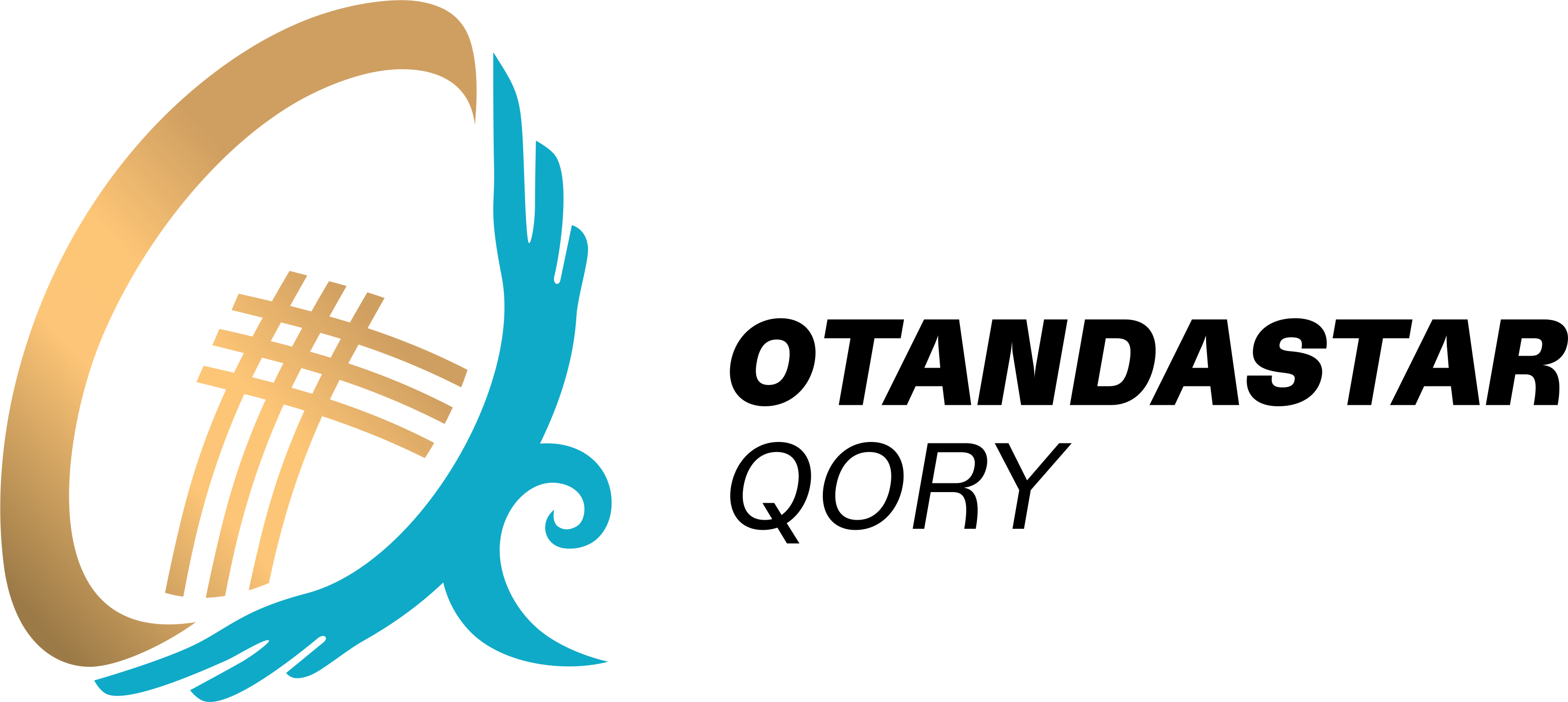
- Moving to Kazakhstan
Our projects
Press center.
- Contact details

- Development strategy
- Legal Framework
- Board of Directors
- Chairmanship of the Foundation
- Structure of the Foundation
- Anti-corruption policy
- Public Procurement
EDUCATION IN KAZAKHSTAN
Kazakhstan's education system helps to gain knowledge that enables to get a profession later. In the republic of kazakhstan, education is divided into general and vocational. School (secondary) education is divided into the classes: primary (grades 1-4), basic and senior. Primary vocational education (after the 9th grade) can be obtained in the specialized lyceums, while secondary vocational education can be received in the specialized schools or colleges.
- The education system in the republic of kazakhstan consists of the several education levels:
- – Preschool education and training;
- – Primary education;
- – Basic secondary education;
- – Secondary education (general secondary education, technical and vocational education);
- – Post-secondary education;
- – Graduate education;
- – Post-graduate education.
The education system is supervised by the relevant ministries: Ministry of Education of the Republic of Kazakhstan and Ministry of Science and Higher Education of the Republic of Kazakhstan .
SECONDARY EDUCATION
Secondary education in kazakhstan is compulsory and includes primary, basic secondary (9 grades) and general secondary (11 (12) grades) education. There is also a vocational and secondary vocational education.
Children aged 6 years old are admitted to the first grade of school. Education in schools of kazakhstan is comprised of 3 levels: primary (1-4 grades), basic (5-9 grades) and senior (10-11 (12) grades). Educational programs are developed for comprehensive development of capabilities of the especially gifted students and are implemented in the specialized schools for gifted children.
TECHNICAL AND VOCATIONAL EDUCATION
Technical and vocational education is aimed at training of qualified workers and middle-ranking specialists and is delivered in the academies, colleges and tertiary colleges based on the basic secondary and (or) general secondary education.
The technical and vocational education in the country is delivered in the 772 technical and vocational education organizations, of which 446 are public and 326 are private. The total amount of students in technical and vocational education organizations is 517.3 thousand people, of which 312 thousand people have studied under the state order.
- The major tasks of technical and vocational education are the following:
- – the training of qualified workers and middle-ranking specialists;
- – expanding the coverage of free-of-charge technical and vocational education;
- – increasing the target state order at the request of the enterprises (10 thousand people annually);
- – increasing the amount of scholarships for students of technical and vocational education organizations;
- – Creating conditions for increasing the accessibility of technical and vocational education;
- – Improving financial stability and targeted support of technical and vocational education;
- – Improving corporate governance of technical and vocational education;
- – Organizing and developing social partnership in the system of technical and vocational education;
- – Creating equal conditions and barrier-free access for students with special educational needs;
- – Ensuring consistency and continuity between the levels of education;
- – Expanding international cooperation in the field of personnel training and re-training of in the technical and vocational education organizations.
In order to ensure the accessibility of technical and vocational education, since last year, the state order has been placed under the principle "money follows the student". Earlier the admission to the colleges was carried out according to the allocated places under the state order and currently the fellows could select the colleges and specialties as per their will. These measures ensure the transparency of state order distribution and admission of applicants to the colleges.
The applicants will be able to apply to the colleges through the egov.kz portal or directly to the college. The applicants can choose up to 4 specialties and up to 4 colleges.
All the school graduates will be given an opportunity to undergo professional diagnostics through the education departments’ information systems. As a result, the applicants will get recommendations to select a particular specialty and be familiar with the datasheets of recommended industries.
The competition is conducted through the education departments’ information systems based on the diploma average score under required and vocation-related disciplines.
Also, the new mechanism is aimed at 100% coverage of the graduates with free-of-charge college tuition under highly demanded specialties.
HIGHER EDUCATION
Currently, higher education in kazakhstan is at the stage of dynamic development that is dictated by scientific and technological progress requirements. Recently, the republic has undertaken global measures to upgrade and reform the education through introducing top notch teaching methods and developing up-to-date infrastructure and providing full-fledged student support.
Higher education structure and study format
- Today, the kazakhstani higher education system in the context of the bologna process parameters is of the following structure:
- – Baccalaureate is higher educational programs intended for cohort study with awarded bachelor's degree under relevant specialty.
- – Magistrate is postgraduate education programs intended for cohort study with awarded master's degree. Master's programs cohort study is based on two higher educational program directions:
- A scientific and pedagogical direction with a study period of at least two years;
- A discipline direction with a study period of at least one year.
- – Doctorate is postgraduate educational programs intended for cohort study to be engaged in scientific, pedagogical and (or) professional activities, with the award of doctor of philosophy (phd) degree and discipline based doctoral degree. The doctorate is on the basis of two master's educational program directions:
- A scientific and pedagogical direction with a study period of at least three years;
- A discipline based direction with a study period of at least three years.
Today, the number of universities in the country is 120, of which national universities – 11, state – 29 (non-profit joint-stock companies), international university – 1, corporate universities – 16, private – 48, autonomous – 1 (nazarbayev university), non-civilian – 14.
STUDY FORMAT
Today, kazakhstanis have the opportunity to receive higher education under the following study format:
- – Full time or classroom study . Under this format a student must attend seminars and lectures in classrooms.
- – Distance learning . Internet based learning. Assignments and educational materials are posted online for self-study. Online consultations are upon request. Diploma projects defense is the higher educational institution intramural conducted.
The most important aspect of higher education development in the country is the creation of a culture of academic integrity. For this purpose, the league of academic integrity had been created in 2018 as an independent and self-established organization following the example of the ivy league in the usa, the russell group in the uk and c9 in china.
ADMISSION TO UNIVERSITIES
The citizens who have acquired general secondary or technical and vocational education or post-secondary education also have the opportunity to receive higher education. There is possibility to go through a shortened educational programs process with an accelerated study period for the persons with acquired technical and vocational, post-secondary or higher education with re-crediting the grades and crediting the earlier grades of disciplines accomplished provided for the sufficiency of the scope of study and continuity of the educational program.
In kazakhstan, admission to universities is based on the unified national testing (unt) results. Since 2017, they have been passing overall school exams attestation to obtain a certificate of secondary education, “altyn belgi” (with honors) and unt score for admission to universities and receiving government grants for studying at universities. Since 2019, there is a possibility for school graduates to take the unt four (4) times a year.
- The UNT in electronic format is carried out in the following terms:
- – From january 10 to february 10 (one attempt);
- – From march 1-31 (one attempt);
- – From may 16 to july 5 (main unt for receiving a government grant, two attempts);
- – From august 10 to august 20 (one attempt).
- Applications are accepted (online) on the website www.testcenter.kz of the national testing center within the following deadlines:
- – From december 20 to january 6 of the calendar year for individuals;
- – From february 20 to march 10 of the calendar year for individuals;
- – From april 28 to may 14 of the calendar year for individuals;
- – From july 20 to july 30 of the calendar year for persons.
Admission to the university after a re-test is done is possible only on a paid basis; and the government grants are distributed upon passing the main unt (in may-july of the year).
At the end of a bachelor's program study a student receives in-depth knowledge of occupation. Studying in master programs is of advanced specialty. In kazakhstan, students can study in one specialty at the bachelor's program, and continue their graduate studies at the master program in another specialty. At the end, the student has the opportunity to master two specialties and hold down the financial and time costs of receiving the second higher education.
Studying in higher educational institutions of kazakhstan is organized both on the basis of government educational order and at the student’s own expense. The major of government educational grants is allocated for the study of technical specialists and teachers. Almost half of the total number of educational grant holders are representatives of a socially vulnerable group of the population. In addition to the government educational grants, the universities expand an access to receiving the higher education through corporate grants and tuition allowances.
GOVERNMENT SCHOLARSHIP
- To encourage the school youth and provide the opportunity to obtain higher education at universities within the country, the government will allocate scholarship to the students. The government scholarship is divided into:
- – It is paid to the students who accomplished the session with “good” and “excellent” grades.
- – Increased (+15% to the basic) . It is assigned to the students who accomplished the session with “excellent” grades.
- – Presidential (+100% to the basic) . Students with special merits such as creative, scientific research, sports, social and cultural etc. Could apply to receive a presidential scholarship.
- – The government also allocates increased scholarships for students with disabilities and those who are without parental custody.
WHAT ARE THE GRANTS THE ONE COULD RECEIVE FOR HIGHER EDUCATION PROGRAMS STUDY IN KAZAKHSTAN?
There are different higher education grant types in kazakhstan:
- – Government general grants . The republican budget funds are allocated among the country's universities.
- – Grants for the youth from western, densely populated and newly created regions of the country . They are allocated according to the designated list of country’s universities and the republican budget funds are allocated.
- – Government target grants . They are allocated in advance to the country’s universities and can be implemented only in a particular educational institution.
- – Mayor office grants . These are the local executive body funds. The students study in specialties at the universities that are in short supply in the region.
- – Rector's grants and scholarships . They are special achievements and merits awarded at the university.
There are specific conditions for receiving the grants to study in each particular university. There are also grants and scholarships from public foundations and organizations. They can be awarded based on competitive arrangements in the separate universities or awarded to the high achieved students throughout the country.
“BOLASHAK" PROGRAM
Kazakhstanis have the opportunity to receive higher education abroad on a paid or free basis. Many european universities are welcoming to admit students from kazakhstan. An international scholarship "bolashak" has been established by government of the republic of kazakhstan for kazakhstanis who have intention to receive a doctorate or master's degree abroad.
An international scholarship “bolashak” has become a unique initiative that provides an access the talented youth to the world top universities. Over the 30 years of scholarship implementation a pool of more than 12.5 thousand highly qualified specialists has been formed in the country amongst the scientists, engineers, doctors, government managers and other professionals. The scholarship graduates have contributed to the building of international relations, kazakhstan’s integration into international community and transfer of international knowledge and technology to the country.
The program graduates have played a key role in the launch of the flagship of kazakhstan’s higher education - nazarbayev university, nazarbayev intellectual schools, astana international financial center, a number of national medical centers, astanahub, astana it university, international center for green technologies and investment projects.
Today, the kazakhstanis have a unique opportunity to gain advanced knowledge in more than 200 of the world top universities in 27 countries, including those included in the highly reputed ivy league and russell group.
In its current implementation the “bolashak” program has prepared highly qualified specialists for the economy of kazakhstan in such current specialties as urban planning, energy systems, hydrology, nuclear industry, cybersecurity, robotics, virology, emergency prevention and response, etc.
To address the request of the head of state to reorient the “bolashak” program, in 2022, 60% of scholarships were allocated for the engineering and technical specialties study and internships. In 2023, to create high-quality competition environment among the engineering and technical workers through the increased number of applicants, a preferential category - “engineering and technical workers for a master's degree” was introduced which provides for foreign language prerequisite study for up to 12 months.
- Universities
- Career Options
- Distance Education
- Education Funding
- International Tests
- » Higher Education
- » List Of Higher Education Institutions>
List of the Higher Education Institutions in Kazakhstan
- University of International Business
- International IT University
- Adilet Law Academy
- Kazakh National Pedagogical University or Abai University
- Almaty Technological University
- Almaty Institute of Power Engineering and Telecommunications
- Central Asian University
- University of Central Asia in Tekeli
- Almaty Management University
- Kainar University
- Kazakh-American University
- German-Kazakh University
- Kazakh Automobile Road Institute
- Kazakh-British Technical University
- Kazakh Academy of Labour and Social Relations
- Kazakh Academy of Sports & Tourism
- M.Tynyshbayev Kazakh Academy of Transport & Communication
- Turar RyskulovKazakh Economic University
- T.K.Zhurgenov Kazakh National Academy of Arts
- Kurmangazy Kazakh National Conservatoire
- Asfendiyarov Kazakh National Medical University
- K. I. Satpayev Kazakh National Technical University
- Kazakh National University
- Ablai-khan Kazakh University of International Relations & World Languages
- KIMEP-Kazakhstan Institute of Management, Economics and Strategic Research
- Suleyman Demirel University
- Turan University
- Kazakh Leading Academy of Architecture and Civil Engineering
- Kazakh National Agrarian University
- Aktau College of Foreign Languages
- Sh.Yesenov - Caspian State University of Technology and Engineering Sh. Yesenov, former Aktau State University
- K.Zhubanov Aktobe State University
- Aktobe State Pedagogical Institute
- M.Ospanov West Kazakhstan State Medical Academy
- Kazakh-Russian International University
- Akmola State Medical Academy
- L. N. Gumilyov Eurasian National University
- Kazakh National Academy of Music
- S. Seifullin Kazakh Agrotechnical University
- Nazarbayev University
- H. Dosmukhamedov Atyrau State University
- Atyrau Institute of Oil and Gas
- K.I.Satpayev Ekisbastuz Engineering & Technical Institute
- Buketov Karagandy State University
- Karagandy State Technical University
- Karagandy State Medical Academy
- Sh.Ualikhanov Kokshetau State University
- A.Baitursynov Kostanay State University
- Kostanay State Pedagogical Institute
- Korkyt Ata Kyzylorda State University
- M. Utemisov West Kazakhstan State University
- Zhangir-Khan West Kazakhstan Agricultural & Technical University
- West Kazakhstan Humanitarian Academy
- S.Amanzholov East Kazakhstan State University
- D.Serikbaev East Kazakhstan State Technical University
- East Kazakhstan Regional University
- Kazakh-American Free University
- Innovative University of Eurasia
- Pavlodar State University S. Toraigyrov
- Pavlodar State Pedagogical Institute
- North Kazakhstan State University
- Rudniy Industrial Institute
- Shakerim Semey State University
- Semey State Pedagogical Institute
- Semey State Medical Academy
- Kazakh Finance Economical Institute
- M.O.Auezov South Kazakhstan State University
- South Kazakhstan State Medical Academy
- M.Saparbayev South Kazakhstan Humanitarian Institute
- Kazakhstan University of People's Friendship
- Taraz State University M.H.Dulati
- Taraz State Pedagogical Institute
- Zhambyl Hydromelioration and Construction Institute
- Zhambyl of Humanities and Technique
- University of Central Asia
- Ahmet Yesevi Universitesi
- O.A. Baikonurov Zhezkazgan University
Related Links
- Higher Education System of Kazakhstan
- Education System
- Admission Requirements
- International Students

- No Articles to display
Know More »
- No Press Releases to display
Talk to our Career Counselors
- 91-9693488888 Dua Qabool Hone Ki Surat in Kochi
- 91-9693488888 Dua For Ex Husband Back in Mumbai
- 91-9693488888 Apne Dushman Se Chutkara Paane Ke
- 91-9693488888 Dua To Make Life Easy in Pune
Talk to Our Career Counselor » Know More »
Kazakhstan Select a Country
Our network :.
- North America
- South America
World Bank Group Publishes New Data, Aiming to Boost Investment in Emerging Markets
Data shows untapped potential, resilience in emerging markets.
WASHINGTON, March 28, 2024 —The World Bank Group today published sought-after proprietary statistics that reveal the credit risk profile of private and public sector investments in emerging markets. Making this data publicly available is the latest in a concerted effort to drive more private sector investment to emerging and developing economies.
Two separate reports are being provided for the first time ever. The International Bank for Reconstruction and Development (IBRD) is sharing sovereign default and recovery rate statistics dating back to 1985. This information will help credit rating agencies and private investors gain a deeper understanding of IBRD’s credit risk.
At the same time, the International Finance Corporation (IFC) is providing private sector default statistics broken down by internal credit rating. The report provides insights that could help private sector investors feel more confident about investing in emerging markets.
“We believe our proprietary information should be a global public good and sharing it will provide transparency and inspire investor confidence,” said World Bank Group President Ajay Banga . “ The publication of this data is aimed at one goal: getting more private sector capital into developing economies to drive impact and create jobs.”
The World Bank Group analyses complement statistics produced by the Global Emerging Markets Risk Database Consortium (GEMs), a group of 25 multilateral development banks and development finance institutions that pools similar data and publishes them as a combined resource for public use.
The consortium releases sovereign and private sector default statistics annually. Earlier this week, the consortium expanded the materials they publish to include private sector recovery rates disaggregated by country income, regions, and sectors.
To ensure the quality of the information, IBRD staff spent more than a year recovering and cleaning sovereign default data covering the period 1985 to 2023. These statistics are unique to IBRD due to its global portfolio and long historical record. Similarly, IFC’s private sector default statistics have been compiled over nearly 40 years and published as a standalone report to respond to the urgent need of investors for emerging market insights. In time, these statistics might also be combined with other data from development institutions and published through the GEMS Consortium.
Key takeaways of World Bank Group statistics:
- The IFC's private sector portfolio had a low default rate of 4.1% from 1986 to 2023, suggesting the untapped potential and resilience of private sector investments in emerging markets.
- For investments rated as "weak" by IFC's internal rating system, the default rate was only 2.6% during the period between 2017 and 2023, indicating that even investments considered higher risk can perform better than could be expected.
- For sovereign borrowers, defaults are rare, averaging just 0.7% annually, and the World Bank typically recovers more than 90% of the amount owed, including both principal and interest. This underscores the World Bank's preferred creditor status and its ability to effectively manage sovereign credit risk.
- Sovereign default losses range from 0.01% to 58.5%, reflecting the effect of interest rates and length of time in default.
The World Bank Group's comprehensive data can inform more nuanced risk assessments, leading to better investment decisions and improved access to capital for emerging markets. This new reporting will support private investment in developing economies - by increasing transparency on historical performance, helping investors gauge risk-reward premiums, and bolstering confidence on the state of emerging markets.
In Washington: Jim Rosenberg, (202) 473 0551, [email protected]
Website: www.ifc.org
Facebook: https://www.facebook.com/IFCwbg
X: https://twitter.com/IFC_org
YouTube: https://www.youtube.com/IFCvideocasts
In Washington: David Theis, +1 202 203 0601, [email protected]
Website: www.worldbank.org
Facebook: http://www.facebook.com/worldbank
X: http:// www.twitter.com/worldbank
YouTube: http:// www.youtube.com/worldbank
This site uses cookies to optimize functionality and give you the best possible experience. If you continue to navigate this website beyond this page, cookies will be placed on your browser. To learn more about cookies, click here .

- Global (EN)
- Albania (en)
- Algeria (fr)
- Argentina (es)
- Armenia (en)
- Australia (en)
- Austria (de)
- Austria (en)
- Azerbaijan (en)
- Bahamas (en)
- Bahrain (en)
- Bangladesh (en)
- Barbados (en)
- Belgium (en)
- Belgium (nl)
- Bermuda (en)
- Bosnia and Herzegovina (en)
- Brasil (pt)
- Brazil (en)
- British Virgin Islands (en)
- Bulgaria (en)
- Cambodia (en)
- Cameroon (fr)
- Canada (en)
- Canada (fr)
- Cayman Islands (en)
- Channel Islands (en)
- Colombia (es)
- Costa Rica (es)
- Croatia (en)
- Cyprus (en)
- Czech Republic (cs)
- Czech Republic (en)
- DR Congo (fr)
- Denmark (da)
- Denmark (en)
- Ecuador (es)
- Estonia (en)
- Estonia (et)
- Finland (fi)
- France (fr)
- Georgia (en)
- Germany (de)
- Germany (en)
- Gibraltar (en)
- Greece (el)
- Greece (en)
- Hong Kong SAR (en)
- Hungary (en)
- Hungary (hu)
- Iceland (is)
- Indonesia (en)
- Ireland (en)
- Isle of Man (en)
- Israel (en)
- Ivory Coast (fr)
- Jamaica (en)
- Jordan (en)
- Kazakhstan (en)
- Kazakhstan (kk)
- Kazakhstan (ru)
- Kuwait (en)
- Latvia (en)
- Latvia (lv)
- Lebanon (en)
- Lithuania (en)
- Lithuania (lt)
- Luxembourg (en)
- Macau SAR (en)
- Malaysia (en)
- Mauritius (en)
- Mexico (es)
- Moldova (en)
- Monaco (en)
- Monaco (fr)
- Mongolia (en)
- Montenegro (en)
- Mozambique (en)
- Myanmar (en)
- Namibia (en)
- Netherlands (en)
- Netherlands (nl)
- New Zealand (en)
- Nigeria (en)
- North Macedonia (en)
- Norway (nb)
- Pakistan (en)
- Panama (es)
- Philippines (en)
- Poland (en)
- Poland (pl)
- Portugal (en)
- Portugal (pt)
- Romania (en)
- Romania (ro)
- Saudi Arabia (en)
- Serbia (en)
- Singapore (en)
- Slovakia (en)
- Slovakia (sk)
- Slovenia (en)
- South Africa (en)
- Sri Lanka (en)
- Sweden (sv)
- Switzerland (de)
- Switzerland (en)
- Switzerland (fr)
- Taiwan (en)
- Taiwan (zh)
- Thailand (en)
- Trinidad and Tobago (en)
- Tunisia (en)
- Tunisia (fr)
- Turkey (en)
- Turkey (tr)
- Ukraine (en)
- Ukraine (ru)
- Ukraine (uk)
- United Arab Emirates (en)
- United Kingdom (en)
- United States (en)
- Uruguay (es)
- Uzbekistan (en)
- Uzbekistan (ru)
- Venezuela (es)
- Vietnam (en)
- Vietnam (vi)
- Zambia (en)
- Zimbabwe (en)
- Financial Reporting View
- Women's Leadership
- Corporate Finance
- Board Leadership
- Executive Education
Fresh thinking and actionable insights that address critical issues your organization faces.
- Insights by Industry
- Insights by Topic
KPMG's multi-disciplinary approach and deep, practical industry knowledge help clients meet challenges and respond to opportunities.
- Advisory Services
- Audit Services
- Tax Services
Services to meet your business goals
Technology Alliances
KPMG has market-leading alliances with many of the world's leading software and services vendors.
Helping clients meet their business challenges begins with an in-depth understanding of the industries in which they work. That’s why KPMG LLP established its industry-driven structure. In fact, KPMG LLP was the first of the Big Four firms to organize itself along the same industry lines as clients.
- Our Industries
How We Work
We bring together passionate problem-solvers, innovative technologies, and full-service capabilities to create opportunity with every insight.
- What sets us apart
Careers & Culture
What is culture? Culture is how we do things around here. It is the combination of a predominant mindset, actions (both big and small) that we all commit to every day, and the underlying processes, programs and systems supporting how work gets done.
Relevant Results
Sorry, there are no results matching your search..
We’re not in Kansas anymore...The view from Washington
Debate over whether the first rate cut will occur in June will be heated.
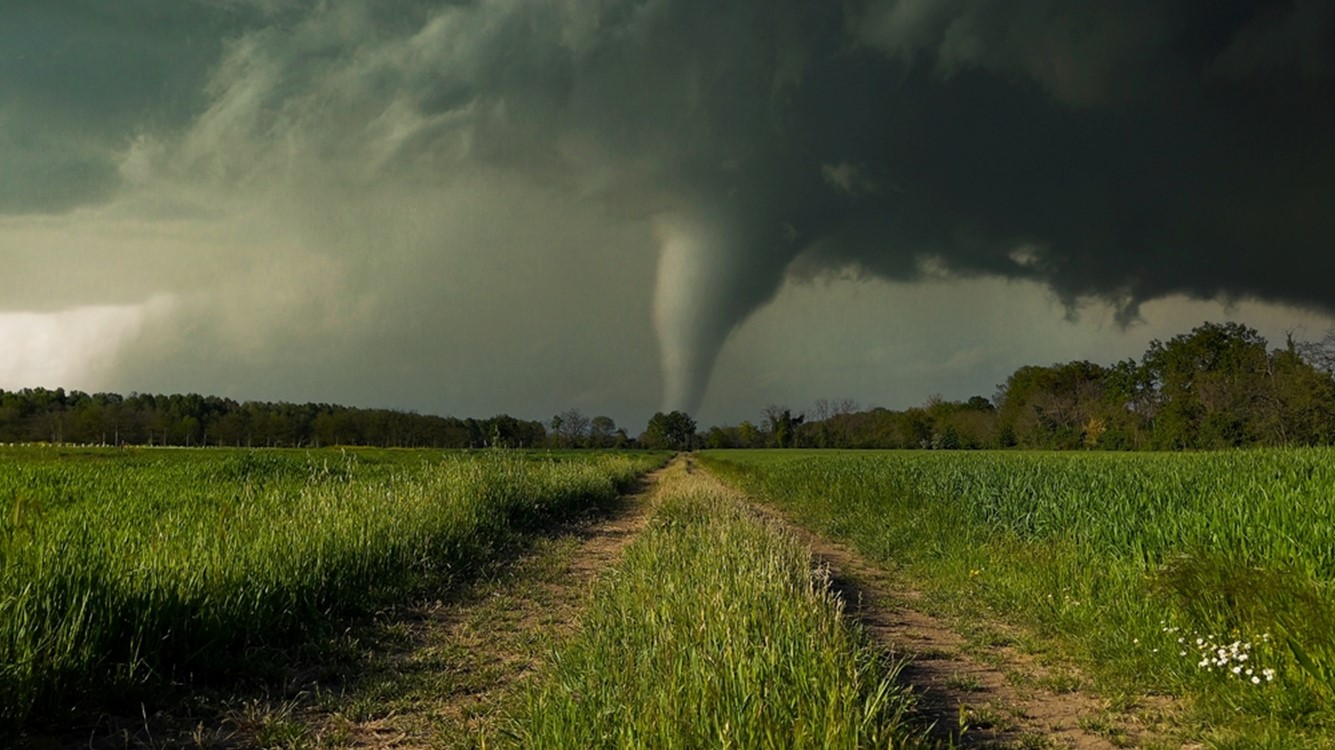
March 12, 2024
Dorothy’s iconic line to Toto, upon realizing she was no longer on her family’s farm in The Wizard of Oz , resonated given the turbulence of the last four years. The pandemic was the twister that transported us from the slow moving and subpar economy of the 2010s into the rapidly changing, less predictable 2020s.
I spent the better part of the first half of February in on- and off-the-record meetings with economists, policy makers, diplomats, political analysts and former heads of state in Washington. The meetings simultaneously bolstered my optimism about the prospects for a soft landing, while adding to my unease over escalating geopolitical tensions.
Globalization played the unfortunate role of the Wicked Witch of the East in the meetings, who was crushed by Dorothy’s house. What was once heralded for its ability to integrate economies, boost market reforms and spread democratic ideals was now the villain.
To hear a former head of state and world renowned economists openly worry about the problems it had unleashed was sobering. Trade, without enforceable guardrails on how countries compete, had consequences. Consumers and corporations benefited from cheap goods, while the costs to workers displaced by trade were untenable. We failed to make good on promises to transition those hit hardest. Inequality across country borders narrowed, while inequalities within borders widened.
It was as if my entire childhood, coming of age in the Detroit area in the 1970s and 1980s, had come home to roost. I bore witness to what the economic research later confirmed. Those who lost jobs to offshoring, notably men, experienced a deterioration in their mental and physical health. Children suffered as families deteriorated.
Episodic periods of unemployment became permanent. Idled factories rusted, while industrial meccas symbolized generational losses.
My best friend’s family slipped into poverty when we were in our teens. Her siblings quit college, returned home and dug up their backyard to plant vegetables to keep food on the table. The smell of freshly baked bread still leaves me with a sense of melancholy, as it was the only bread her family could afford.
I thought about that a lot during the last few weeks. Few have seen what I saw; even fewer link it to the political polarization we are enduring. There is a natural path from those displaced by free trade and the 2008-09 global financial crisis to deepening political divisions.
This edition of Economic Compass lays out what I gleaned from recent meetings. The economic fundamentals for a soft landing in the US remain good. The Federal Reserve looks poised to join other central banks and begin the process of cutting rates, albeit cautiously. The worst mistake a central bank can make is to cut prematurely and stoke a more persistent bout of inflation or worse, stagflation. The stakes on getting policy right couldn’t be higher given the tinderbox that economic inequality has become.
The hype surrounding generative AI (GenAI) entered our discussions. Would it make our problems worse or cure what ails us? Spoiler alert: It depends on how we leverage it. The potential to boost the middle class is great. So is its ability to spread misinformation, sow the seeds of discontent and intensify cyber attacks.
Escalating geopolitical tensions posed the greatest threat to the near-term outlook. Political polarization is a close second. It has entered every facet of life, right down to lenses through which we assess the economy and personal relationships. One consumer behavioral expert noted that women cite partisan differences as the number one reason that they break up with their romantic partners; men cite weight gain. That is sad.
Prospects for soft landing improve
Discomfort in our comfort.
The stunning performance of the economy in 2023 and the momentum with which we entered the year shored up confidence that the economy could achieve a soft landing in 2024. By the end of 2023, the US economy was above its pre-pandemic trend forecasted by the Congressional Budget Office (CBO) in 2020. The consensus was that the economy would continue to post solid, if not spectacular, gains in 2024 and 2025. (See Chart 1)
Consumer spending is expected to slow but remain a driver of gains. Hiring is expected to moderate, not add to unemployment. The surge in retirements is taking a toll on participation in the labor market, which will keep unemployment unusually low.
The mortgage winter is expected to thaw, but the housing market is not expected to post strong gains until the second half of the year. Mortgage rates need to stay below 7% to unleash the pent-up demand due to millennials aging into their prime home-buying years. Roughly 12,000 young adults are turning 35 every day, which has supercharged demand as supply remains constrained. New home construction is picking up but underbuilding in the wake of the subprime mortgage crisis exacerbated shortages.
Business investment is forecast to weaken. New office construction, which was still coming on line in many major cities is coming to a halt. Shale production is slowing, while renewable energy projects are being delayed in response to high rates and the hurdles due to domestic content rules. The exception is electric vehicle and chip plants, which are still being built.
Inventories outside of the vehicle sector are expected to be rebuilt. Vehicle inventories are bloated, even as incentives have picked up. New vehicle purchases have become a luxury for the two top income quintiles.
Federal government spending is poised to slow in response to the continuing resolution but should pick up if an omnibus bill can be passed. Congress was able to avert a shutdown in early March, which is a low threshold given we are six months into the fiscal year.
We currently do not have the additional spending from an omnibus in the forecast. It would mirror the bill that the former Speaker of the House of Representatives negotiated in June 2023 to avoid a debt default, except that it now includes more than 600 pages of earmarks.
State and local governments have more resources; 46 of 50 states ended fiscal year 2023 with a surplus. Most states expect to exceed or meet their revenue targets in fiscal 2024.
The trade deficit is expected to widen, with the US outperforming its trading partners. The volume of imports is expected to outpace exports. Mexico has eclipsed China as our largest import partner due to its proximity to the US and guaranteed access to our market via the USMCA trade agreement. Foreign direct investment to Mexico surged, including from China.
Humility is the better part of valor; there was little comfort in the optimism that we shared. Most of the same economists were convinced that the economy would slow, if not slip into recession, in 2023. No one expected the economy to accelerate in the wake of the most aggressive credit tightening cycle by the Fed since the 1980s.
Much depends upon the ability to keep generating jobs. The bulk of the bite of higher rates showed up as a drop in job openings, not a surge in layoffs. Job openings have slipped from a peak of 12.2 million in March 2022 to 8.9 million at the end of January 2024. That compares with 7.0 million in February 2020. Employers let go of temporary workers and cut back on hours worked, instead of doing wholesale layoffs.
Reports of layoffs at publicly traded companies, largely in tech and finance, were flagged as a warning signal to policy makers that the slowdown in employment might cut deeper. They were not having it, with some surmising that much of what was slated to be cut would be absorbed. That was especially true of jobs in tech.
Financial conditions eased in late 2023 and early 2024, as financial markets attempted to front-run the Fed on rate cuts. That triggered a pickup in some pockets of the economy. Fed Chairman Jay Powell cited reports of a pickup in activity at year-end by some contacts at his press conference following the January meeting.
What was expected to be the Fed’s hardest mile in its marathon against inflation morphed into a relay race. The most interest rate sensitive sectors suffered layoffs, while less interest rate sensitive sectors picked up the slack in the second half of 2023.
The sectors that drove employment have room to run. Healthcare and social assistance is chasing a moving target due to aging demographics. Leisure and hospitality finally crossed the peak hit in February 2020 and, if TSA throughput is any indicator, travel remains robust. Job openings for state and local governments, excluding public education, remain elevated.
Payroll employment gains re-accelerated after a lull due to strikes over the summer and fall of 2023. That does not usually happen before a recession. However, response rates to the survey have been extremely low and revisions large. If the unemployment rate holds at 3.9% or rises in March, that could trigger what is known as the Sahm Rule , an early recession indicator. A modest increase in unemployment is consistent with the Feds definition with a soft landing - the key is to keep the rise small.
Risks . The largest near-term threat to the outlook is a spike in oil prices. Those closest to the sector were surprised at how well behaved prices have been in recent months. Shale production is expected to rise at the slowest pace since 2016 in 2024, as producers focus on returning more of their profits to investors.
Escalating geopolitical tensions exacerbate those risks. As the war in the Middle East continues, OPEC+ is still expected to keep its production cuts in place.
Oil analysts were divided over whether OPEC nations would cheat, which would cap a rise in oil prices. One geopolitical expert even surmised that OPEC might cut production to sway the outcome of the US election.
Separately, many voiced their concerns about the latent effects of rate hikes on the economy. Public credit markets are much more transparent than private markets. No one was exactly sure how much dry powder firms would have left in their arsenals, once loans reprice in 2024.
The losses associated with an overhang of office space were expected to hit much harder in 2024 than 2023. Many loans had been postponed in hopes that rates would come off of their highs. Rates can’t fall enough to make some of the emptiest buildings viable. The losses are dispersed and not seen as a systemic threat but would nonetheless be a headwind.
Middle-market companies were tentative, despite improving assessments of the economy. They were hedging investment decisions, signing contracts that enabled them flexibility in reacting to economic conditions. This was true across the board and started to show up as a drawdown in deposits, a slowdown in loan demand and delays to big investment decisions.
On the upside is the ramp-up associated with GenAI. Many see a bubble forming. That is common with such a consequential innovation. Investors bet on the sector before they know how the technology will be fully deployed. We saw a similar phenomenon with utilities, rail and the internet. Bubbles helped finance the infrastructure needed to adopt new technologies.
Chart 1: GDP Growth
GDP, 2017 $, Trillions
Consumer might drives gains
Real GDP growth grew a revised 3.2% annualized pace in the fourth quarter. Consumers played a key role in supporting the economy. A rebound in inflation-adjusted wages, ongoing employment gains and a cushion from savings amassed and debt paid down earlier in the cycle blunted the blow of higher interest rates. The housing market struggled but showed signs of green shoots. Business investment remained subdued, except for the construction of electric vehicle and chip plants. Inventories were rebuilt and government spending remained strong. The deficit narrowed slightly, with exports outpacing imports.
Real GDP is forecast to slow to a 2.0% annualized pace in the first quarter. Consumer spending is expected to moderate, while the housing market stabilizes. Business investment is expected to contract. Inventories outside of the vehicle sector are building. (Incentives are back; affordability is improving.) Federal government spending is poised to weaken in response to the continuing resolution. State and local government spending remains solid. The trade deficit has begun to widen; the volume of imports is expected to outpace that of exports.
Fed holds off until mid-year. The Federal Reserve is expected to start rate cuts in June and cut a total of three times in 2024. The Fed is expected to begin to taper the pace it allows assets to mature off its balance sheet in late summer. The concern is the functioning of the Treasury bond market. Liquidity has never returned to pre-pandemic norms.
The Fed funds rate is not expected to dip below 3% until early 2026. The good news is that the Fed is no longer willing to risk a recession to dampen inflation, given how far we have come in the battle against inflation. The Fed would cut to stimulate if unemployment spiked.
A productivity miracle?
Optimists vs pessimists.
Debate over the outlook for productivity growth was heated. Productivity growth is notoriously volatile; it surged as we went into lockdowns, plummeted when the economy reopened and rebounded in 2023.
The most recent productivity gains are getting us close to the pre-pandemic trend. (See Chart 2.) The question is whether recent gains can be sustained.
Optimists argue that the recent catch-up in productivity growth reflects the pickup in investment earlier in the recovery and the learning of older versions of AI. The pandemic was a catalyst, much like the Y2K threat (Google it) in the 1990s, to make leapfrog investments and more quickly adopt new technologies.
Those shifts enabled inflation to decelerate, even as labor markets tightened and wages accelerated in the late 1990s. However, globalization also played a role as it spurred competition and lowered inflation with a jump in cheap imports.
Optimists posit that we still have room to run on productivity gains before the effects of GenAI kick in. Pilots on the boost to productivity by GenAI are remarkable and warrant watching. Some firms are already seeing a boost but lacked the critical mass to show up in the overall economic data.
The lags between innovation and commercialization can be a decade or longer. Most expect GenAI to be adopted faster than previous open use technologies. The largest hurdle is cost. Unlike other open use technologies, the costs of the data and the energy needed to run the GenAI models rise with usage.
Energy costs are so large that the tech behemoths are working to secure their own designated energy sources to limit the costs of adoption. One major player has contracted its own nuclear plant to support its energy needs. Startups are trying to counter the funding bias large firms have in running GenAI models by increasing the energy efficiency of the models themselves.
The high costs of everything from curating firm-specific data to the energy needed to run the models make what some see as theoretically possible but not economically feasible. The reduction of the costs to run GenAI models is considered a necessary prerequisite to broader adoption.
Recent research suggests that widespread deployment across firms is more likely to occur via “AI as a service model.” This is one of the reasons that we are seeing partnerships form to deliver ways to curate and customize data for a broader set of firms. Many firms are front-running potential disruptions to their business model by choosing to lean into the new technology.
The cost threshold on the most transformative aspects of GenAI was expected to slow the dispersion of the technology, even though it was expected to be adopted faster than other technologies. That left many skeptical of shifts to pie-in-the sky forecasts for productivity growth.
More of those improvements are expected to be felt in the 2030s rather than the 2020s. Wealthier countries are expected to adopt the technology faster than emerging economies. That could reverse the improvement in inequality between countries and add to the setback emerging economies suffered as a result of the pandemic.
More of the focus was on how the technology would change the nature of work, not just displace workers. Historically, large innovations fueled jobs not yet imagined while displacing existing jobs. GenAI appears unique in how it can augment skills and change the nature of work all along the educational spectrum.
One recent paper by labor economist David Autor of MIT posits that GenAI could expand the size of the middle class by up-skilling a larger swath of workers. That would help to narrow instead of widen income inequalities.
Separately, many worry that AI models perpetuate the biases that they have literally learned from us. I have a more nuanced view. It is easier to remove bias from a program than it is to remove it from our own hardwiring. The challenge is to identify it.
Cyber security and the risk posed by bad actors is a larger concern. One tech expert outlined how the CEO of a company he worked with was almost fooled by a phishing email that learned from his profile and attempted to hack his company with a near perfect replica of his favorite charity; it failed, but only because the CEO was forewarned on what could happen.
Pessimists see much of the recent improvement in productivity as a catch-up on earlier losses. Productivity growth picked up as supply chains healed and workers shifted to more productive companies, which paid them a premium for their skills.
A better balance between the supply and demand for workers put downward pressure on quit rates. That enabled workers to learn the jobs they had and firms to implement training delayed by the pivot online. The recent plateau in educational attainment, notably among women, could slow productivity growth.
Ongoing supply-chain fragilities, as evidenced by recent attacks in the Red Sea, are another hurdle. Those shifts are delaying deliveries and boosting costs, especially on goods between Europe and Asia. Shipping costs across the board have risen.
Chart 2: Productivity rebounds
Labor productivity in nonfarm business sector, 2017=100
Central banks are “cautious”
The fed will be slow to cut.
The Federal Reserve worries that much of the low hanging fruit in response to supply chain healing and the drop in goods prices, including oil prices, has been plucked. Meanwhile, it fears that service sector inflation, which is more sensitive to wage costs, is getting sticky. Preliminary data for January and February suggest those fears may be warranted. Service sector inflation accelerated both months, while increases in prices were more broad based.
Recent research by the Federal Reserve Bank of San Francisco suggests that the rise in prime-age (25–54-year-olds) participation may be another hurdle. Much of the improvement and related increase in entrants into the labor market we saw in 2023 could be coming to an end. That could stop wages from cooling to a pace to more consistent with the 2% inflation target.
A loss in prime-age participation is worrisome on multiple levels. It reduces the ratio of workers to retirees, which stresses government finances, and leaves large swaths of the population on the sidelines.
Prime-age participation among women hit a new record in 2023, but still lags all of our major competitors in the developed world. Prime-age participation among men regained ground lost to the recession but is still low. Prime-age participation among men peaked in the late 1950s. (Yes, you read that right.)
That is one of many reasons the Fed was so focused on getting the economy back to the low unemployment we saw in 2019. It hoped that would enable more workers to return to the labor force, without fueling inflation.
Workers who saw their wages leveled up as they went from being invisible to essential, finally had a moment in the sun. Then they were burned by inflation. Hence, the Fed’s commitment to restoring price stability, even if it meant “pain,” a euphemism for unemployment.
What is price stability? It is when inflation no longer distorts decision making. The 2% target is somewhat arbitrary. It doesn’t mean that prices fall after skyrocketing during the pandemic, although some have come off their peaks. It means that inflation cools more rapidly than wages and purchasing power is restored. Eventually, consumers recoup what was lost to inflation and then feel improvements in living standards.
Normalizing rates after a bout of inflation without a recession is not the same as cutting to stimulate. The urgency isn’t there, while the risks of cutting prematurely remain high. History is littered with examples of central banks which cut only to stoke a more corrosive and persistent bout of inflation. Negative supply shocks, from armed conflicts to climate change, exacerbate the upside risks to inflation.
We are still forecasting the first cut in rates to occur in June, with a total of three cuts by year-end 2024. The fed funds rate is expected to drop to a 2.75%-3% target range in early 2026. That is well above the February 2020 target of 1.5%-1.75%.
What would prompt the Fed to cut more aggressively? A much weaker economy than we currently have. The Fed is no longer willing to suffer a recession to get inflation down, given the progress made. The Fed has been walking a tightrope; trying to keep financial markets from front-running them on rate cuts and risk an acceleration in inflation, while not overshooting with restrictive policies.
Too close to call?
Veteran election forecasters take their pick.
Most Americans do not want a rematch of 2020, but that appears all but a done deal. The outcome of the election remains too close to call, with a high probability that the results will be contentious, given how deeply divided the electorate remains.
As noted in last month’s report , that is why we expect the election itself to have an impact on the economy, before the outcome of the election is determined. Anxiety leading up to and in the aftermath of a hotly contested election fuels policy uncertainty, which acts as a tax and dampens overall economic activity. That negative effect is already showing up in reports from lenders and businesses.
Veteran political analyst Charlie Cook re-upped his 2020 prediction that the presumptive Republican nominee would win the White House in 2024. He expects Republicans to take the Senate but sees the House of Representatives as a toss-up.
Economic models of the outcome of the race point to a different outcome. (I moderated a heated exchange between Charlie and Mark Zandi of Moody’s back in February 2020.) Zandi’s model is still forecasting a narrow victory for the presumptive Democratic nominee. Ray Fair of Yale University laid out his economic model and its findings; it supports Zandi’s conclusions but both forecasters admitted that the election outcomes remain a very close call.
Recent research by Pew suggests that we have all grown fatigued by our divisive politics. However, that is not new. We were similarly fatigued in 2020.
Research by University of Maryland was more encouraging. It suggests the gap in beliefs and policy solutions narrowed substantially when discussion was preceded by facts, not ideological arguments. It found overwhelming policy agreement, even when discussing some of the country’s thorniest issues, such as Social Security, immigration and the federal debt.
How do we bridge those differences? Sporting events are seen as a big plus because they get people cheering for a common team. Talking with instead of at one another is also undervalued. Once we spend time relating to people as human beings, sharing stories about our families and personal challenges, the tribal barriers we erect tend to break down. The biggest challenge in an election year is to get us all out of our echo chambers.
Bottom Line
That brings me back to where I started: The Wizard of Oz . The pandemic and the chaos of the last four years were not unlike Dorothy’s journey along the Yellow Brick Road. Her success in her journey was not in magically being transported home but in discovering her own inner strength, which she found in the bonds she built along the way. That is not unlike the resilience we have seen in the economy through the challenges posed by the pandemic, reopening, inflation and a rise in armed conflicts.
The story is a cautionary tale, reminding us to look behind the curtain and avoid being misled by unsound economic policies that play to our fears instead of our strengths. Globalization has faults and strengths.
Some of our greatest challenges – from climate change to escalating geopolitical tensions and inequality – cannot be solved by turning inward. They require cooperation and allies, much like Dorothy found in her companions.
Ultimately, it is a story of hope instead of despair, which is why I was drawn to it. I believed in my best friend as she believed in me; we are still close all these years later. She beat the odds of her childhood much like the economy beat the odds of a recession. That is in and of itself a win along with the prospect that unemployment is likely to remain relatively low in the year ahead.
Dive into our thinking:
Debate over whether the first rate cut will occur in June will be heated.
Explore more

KPMG Economics
A source for unbiased economic intelligence to help improve strategic decision-making.

KPMG Global Economic Outlook
A prospective outlook on the global economy.

Navigating an election-year maze...Policy uncertainty and the economic outlook
The economy remains defiantly strong.
Subscribe to insights from KPMG Economics
KPMG Economics distributes a wide selection of insight and analysis to help businesses make informed decisions.
Meet our team

By submitting, you agree that KPMG LLP may process any personal information you provide pursuant to KPMG LLP's Privacy Statement .
Thank you for contacting KPMG. We will respond to you as soon as possible.
Contact KPMG
Job seekers
Visit our careers section or search our jobs database.
Use the RFP submission form to detail the services KPMG can help assist you with.
Office locations
International hotline
You can confidentially report concerns to the KPMG International hotline
Press contacts
Do you need to speak with our Press Office? Here's how to get in touch.

Announcing Windows 11 Insider Preview Build 22635.3420 (Beta Channel)
- Amanda Langowski
- Brandon LeBlanc
Hello Windows Insiders, today we are releasing Windows 11 Insider Preview Build 22635.3420 (KB 5035953) to the Beta Channel.
REMINDER: All Windows Insiders in the Beta Channel will now be on the same build (Build 22635.xxxx) via an enablement package . For Windows Insiders in the Beta Channel who want to be the first to get features gradually rolled out to you , you can turn ON the toggle (shown in the image below) to get the latest updates as they are available via Settings > Windows Update. Over time, we will increase the rollouts of features to everyone with the toggle turned on. Should you keep this toggle off, new features will gradually be rolled out to your device over time once they are ready.

Going forward, we will document changes in Beta Channel builds in two buckets: new features, improvements, and fixes that are being gradually rolled out for Insiders who have turned on the toggle to get the latest updates as they are available and then new features, improvements, and fixes available to everyone in the Beta Channel.
New features gradually being rolled out to the Beta Channel with toggle on*
New position for the widgets entry-point on left-aligned taskbars .
We’re beginning to roll out a new position for the Widgets entry-point on left-aligned taskbars. The taskbar entry-point will move to the left of the systems tray and will be wider so you can see richer content from Widgets on your taskbar. When you launch the Widgets board, it will fly out from the right side instead of the left side.

FEEDBACK: Please file feedback in Feedback Hub (WIN + F) under Desktop Environment > Widgets.
Changes and Improvements gradually being rolled out to the Beta Channel with toggle on*
[file explorer] .
- In response to feedback from Windows Insiders, drag-and-drop files with your mouse functionality between breadcrumbs is now available in the File Explorer Address Bar. We are beginning to roll this out today, so not all Insiders in the Beta Channel will see it right away.
[Windows Share]
- Users will be able to now generate QR codes for URLs and cloud file links through the Windows share window to seamlessly share webpages and files across their devices. To try this out in Microsoft Edge, just click the share button in the Edge toolbar and choose “Windows share options”.

- To prevent accidentally closing the Windows share window, clicking outside the Windows share window will no longer close it. To close the Windows share window, just press the close button at the top right corner.
[Windows Backup]
- If you have both Personalization and Other Windows settings toggled on under Settings > Accounts > Windows backup , many of your sound settings (including chosen sound scheme) will be backed up which can be restored via the Windows Backup app.
- We’re beginning to roll out the ability to sign-in with your Microsoft account (MSA) directly within the Windows Backup app to save backups to your account.
Fixes gradually being rolled out to the Beta Channel with toggle on*
[file explorer].
- Fixed an issue causing File Explorer to crash on launch for a small number of Insiders in the previous flight.
[Multiple Desktops]
- Fixed an issue where the option to set a different wallpaper on each desktop wasn’t working.
- Fixed an issue which could potentially result in no app results showing in search anymore.
[Task Manager]
- Fixed an issue where Task Manager was holding onto process handles sometimes, leading to processes not stopping when you closed apps if you’d had Task Manager open.
Changes and Improvements gradually being rolled out to everyone in the Beta Channel
[copilot in windows*].
- You can ask Copilot in Windows (in preview) for help ten times when you sign in to Windows using a local account. After that, you must sign in using a Microsoft account (MSA) or a Microsoft Entra ID account (formerly Azure Active Directory (Azure AD)). To sign in, use the link in the dialog that appears in Copilot in Windows. If you do not sign in, some Copilot features might not work. To learn more, see Welcome to Copilot in Windows and Manage Copilot in Windows .
[Lock screen]
- This update adds Weather and more to your lock screen. Stay informed and efficient with dynamic updates that bring finance, traffic, and sports to your Lock screen, alongside weather. The card design has been improved with acrylic blur, card size, spacing, and font optimizations.To turn on this feature, go to Settings > Personalization > Lock screen . To learn more, see Personalize your lock screen . Note this feature might not be available to all users because it will roll out gradually.

Fixes for everyone in the Beta Channel
- New! This update affects Windows Hello for Business. IT admins can now use mobile device management (MDM) to turn off the prompt that appears when users sign in to an Entra-joined machine. To do this, they can turn on the “DisablePostLogonProvisioning” policy setting. After a user signs in, provisioning is off for Windows 10 and Windows 11 devices.
- New! This update improves the Remote Desktop Session Host. You can now set up its “clipboard redirection” policy to work in a single direction from the local computer to the remote computer. You can also reverse that order.
- This update addresses an issue that affects the Combine taskbar buttons and hide labels The app labels in the taskbar sometimes do not have the correct length, which cuts off the label text. This occurs when this setting is set to “When taskbar is full” or “Never.”
- This update addresses an issue that affects certain Neural Processing Units (NPU). They do not show in Task Manager.
- This update addresses an issue that affects a network resource. You cannot access it from a Remote Desktop session. This occurs when you turn on the Remote Credential Guard feature and the client is Windows 11, version 22H2 or higher.
- This update addresses an issue that affects Windows Defender Application Control (WDAC). It prevents a stop error that occurs when you apply more than 32 policies.
- This update addresses a deadlock issue in CloudAP. It occurs when different users sign in and sign out at the same time on virtual machines.
- This update addresses an issue that affects the Group Policy service. It fails after you use exe to apply an audit policy to the system.
- This update addresses an issue that affects the Settings app. It stops responding when you use it to remove Bluetooth devices.
- This update addresses an issue that affects Notepad. It fails to print to certain Internet Printing Protocol (IPP) printers when you use a print support app.
- This update addresses an issue that affects dsamain.exe . When the Knowledge Consistency Checker (KCC) runs evaluations, it stops responding.
- This update addresses an issue that stops some apps and features from being available. This occurs after you upgrade to Windows 11.
- This update affects MSIX applications. It helps their UI to localize correctly for all languages when you upgrade your OS.
- This update addresses an issue that affects the Microsoft Message Queue (MSMQ) PowerShell module. It does not load.
- This update addresses an issue that affects the existing AppLocker rule collection enforcement mode. It is not overwritten when rules merge with a collection that has no rules. This occurs when the enforcement mode is set to “Not Configured.”
- This update addresses an issue that affects Transport Layer Security (TLS), version 1.3. It causes Azure App Services to fail. This occurs when the web server attempts to connect to a third-party Lightweight Directory Access Protocol (LDAP) server.
- This update addresses an issue that affects the touch keyboard and the candidate window for the Japanese and Chinese Input Method Editors (IME). They do not show after you come out of Modern Standby. To learn more, see Microsoft Japanese IME and What is Modern Standby .
- This update addresses an issue that affects some wireless headphones. Bluetooth connections are not stable. This occurs on devices that have firmware from April 2023 and later.
- This update addresses an issue that affects USB audio. It fails on some processors. This occurs after you pause, play, or resume from sleep.
- This update supports DST changes in To learn more, see Interim guidance for Kazakhstan time zone changes 2024 .
- This update supports DST changes in To learn more, see Interim guidance for Samoa DST changes 2021 .
- This update supports daylight saving time (DST) changes in Greenland. To learn more, see Greenland 2023 time zone update now available .
- This update supports daylight saving time (DST) changes in To learn more, see Interim guidance for DST changes announced by Palestinian Authority for 2024, 2025 .
- This update addresses an issue that affects Secure Launch. It does not run on some processors.
- This update addresses a reliability issue. It affects a Virtual Remote App product when you use a custom shell to open it.
- This update addresses an issue that affects Containers that you create or deploy. Their status does not progress past “ContainerCreating.”
- This update makes Country and Operator Settings Asset (COSA) profiles up to date for some mobile operators.
- This update addresses an issue that affects the COM+ component. Some applications that depend on it stop responding.
- This update addresses an issue that affects the time service. You can configure it using mobile device management (MDM) or a Group Policy Object (GPO). But the Windows Settings app does not match what you have configured.
- This update addresses an issue that occurs when you use LoadImage() to load a top-down bitmap. If the bitmap has a negative height, the image does not load and the function returns NULL.
Known issues
- We are investigating an issue where Internet Information Services (IIS) and Windows Communication Foundation (WCF) may not work after installing this update.
- [NEW] Using Shift + F10 will unexpectedly open Show More Options in the File Explorer context menu in this build.
Windows Insiders in the Beta Channel who have the new position for the Widgets entry-point on left-aligned taskbars may see the following known issues:
- [NEW] Swipe invocation for Widgets may not work if taskbar is center-aligned instead of left-aligned.
- [NEW] Unpinning Widgets from the taskbar may not work if taskbar is center-aligned instead of left-aligned.
- [NEW] The Widgets board is incorrectly positioned when Copilot is in side-by-side mode.
- [NEW] Turning on/off Widgets in taskbar settings may refresh the taskbar.
About the Beta Channel
The Beta Channel is the place we preview experiences that are closer to what we will ship to our general customers. Because the Dev and Beta Channels represent parallel development paths from our engineers, there may be cases where features and experiences show up in the Beta Channel first. However, this does not mean every feature we try out in the Beta Channel will ship. We encourage Insiders to read this blog post that outlines the ways we’ll try things out with Insiders in both the Dev and Beta Channels.
* Getting new features: For Windows Insiders in the Beta Channel who want to be the first to get features gradually rolled out to you, you can turn ON the toggle to get the latest updates as they are available via Settings > Windows Update. Over time, we will increase the rollouts of features to everyone with the toggle turned on. Should you keep this toggle off, new features will gradually be rolled out to your device over time once they are ready.
**Availability of Copilot in Windows: Copilot in Windows in preview is being rolled out gradually to Windows Insiders in select global markets. The initial markets for the Copilot in Windows preview include North America, United Kingdom and parts of Asia and South America. It is our intention to add additional markets over time.
Important Insider Links
- Want to learn how we made Windows 11? Check out the Inside Windows 11 website to hear and meet our makers from Engineering, Design and Research to share their insights and unique perspectives throughout this journey.
- You can check out our Windows Insider Program documentation here .
- Check out Flight Hub for a complete look at what build is in which Insider channel.
Thanks, Amanda & Brandon

COMMENTS
According to the State Higher Professional Education Standard, in Kazakhstan, bachelor's degree programs have 240 credits, specialty programs have 300 credits, master's programs have 60-120 credits, and doctoral programs have 180 credits. Academic mobility of students, teaching staff, and administrative staff.
A 2017 OECD review of Kazakhstan's higher education system notes that: "Nazarbayev University is consuming a large portion of total public spending. At best, this is an experiment that carries substantial risks: it is an open question whether any excellence that the university may achieve can outweigh reduced funding for the rest of the ...
The structure of higher and postgraduate education of the Republic of Kazakhstan is regulated by the Law "On Education" (dated July 27, 2007). With the signing of the Bologna Declaration in 2010, Kazakhstan is implementing a three-level system of higher education "Bachelor-Master- Ph.D.".
There are over 100 universities in the country but Kazakhstan has two universities in the overall Times Higher Education World University Rankings. The highest-ranking university in Kazakhstan is Al-Farabi Kazakh National University, which is ranked at number 801-1000.
The higher education system of Kazakhstan contains 131 universities, most of which are private universities and academies (NCEPA 2014 ). In the last few years, there has been a decrease in the number of higher education institutions (HEIs) due to tighter regulations by the Ministry of Education and Science (MES).
Higher Education in Kazakhstan 2017. Higher education policy is the key to lifelong learning and this is particularly important as the ageing population is increasing in many countries. It is a major driver of economic competitiveness in an increasingly knowledge-driven global economy and it also brings social cohesion and well-being.
With 189 member countries, staff from more than 170 countries, and offices in over 130 locations, the World Bank Group is a unique global partnership: five institutions working for sustainable solutions that reduce poverty and build shared prosperity in developing countries.
The Soviet education apparatus began developing HE in the Kazakh SSR as part of its overall massification of education project in the 1920s and the emphasis on preparing local specialists during the korenizatsia period. Prior to this time, no HEIs existed in the territory of present-day Kazakhstan (Froumin et al. 2014; Kyzykeyeva and Oskolkova 2011).
Higher Education in Kazakhstan 2017. Higher education policy is the key to lifelong learning and this is particularly important as the ageing population is increasing in many countries. It is a major driver of economic competitiveness in an increasingly knowledge-driven global economy and it also brings social cohesion and well-being.
In examining the higher education system in Kazakhstan, this report builds on a 2007 joint OECD/World Bank review: Reviews of National Policies for Education: Higher Education in Kazakhstan 2007. Each chapter presents an overview of progress made in the past decade across the main areas explored in the 2007 report. These include quality and ...
In examining the higher education system in Kazakhstan, this report builds on a 2007 joint OECD/World Bank review: Reviews of National Policies for Education: Higher Education in Kazakhstan 2007. Each chapter presents an overview of progress made in the past decade across the main areas explored in the 2007 report. These include quality and ...
Higher education is a key economic and social priority in the global arena. Many countries have sought to advance reforms aimed at increasing access, promoting greater educational quality, and ensuring financial responsibility and sustainability. Often, strategies for achieving these aims are informed by experiences elsewhere. However, transporting education policy reforms can be problematic ...
Higher education in Kazakhstan: social practices, subjects and interests (on the results of sociological research) russian version. 143p. Almaty. Realization of Bologna Process in Tempus countries (2010). Bruxelles. P. 26. Seguillon P.L. (2010) Kazakhstan Pivot de l’Eurasie. Paris: Prestige Communication. 235p.
The British Council works to support the reforms being implemented by the Government of Kazakhstan to modernise and internationalise the country's higher education system. We provide training and capacity building support to higher education institutions in Kazakhstan. Since 2015, we have delivered over 70 workshops and events engaging more ...
The Republic of Kazakhstan is divided into 14 regions (Kazakh: oblystar), which are further subdivided into districts (Kazakh: aýdandar), and 4 autonomous cities. The vast majority of higher education institutions meeting the uniRank selection criteria are located in Almaty city. The following uniRank league tables or sub-rankings take into ...
2. Internationalization processes in the Kazakhstani higher education system The internationalization of education is the process of including various international aspects in the research, teaching and administrative activities of educational institutions of different levels. The internationalization process involves: - students: recruitment ...
Secondary education in Kazakhstan is compulsory and includes primary, basic secondary (9 grades) and general secondary (11 (12) grades) education. There is also a vocational and secondary vocational education. Children aged 6 years old are admitted to the first grade of school. Education in schools of Kazakhstan is comprised of 3 levels ...
By tracing Kazakhstan's development since independence from the Soviet Union and focusing on key higher education development policy frameworks, the paper argues and illustrates that: (1) the internationalisation of higher education in Kazakhstan promotes a specific representation of the world that is considered universal and modern; (2) the ...
The demise of the Soviet system and ideology toppled the Soviet—de facto Russian—monopoly in higher education. The Central Asian republics of Kazakhstan, Kyrgyzstan, Tajikistan, Turkmenistan, and Uzbekistan had to remodel their national systems of higher education to adapt to new socioeconomic circumstances (Smolentseva et al. 2018).While all five states have struggled with the Soviet path ...
The education system in Kazakhstan is highly centralized, which allowed it to effectively implement a response to the COVID-19 pandemic, with local governments moving quickly to online learning platforms. Most higher education institutions already had online infrastructure in place and secondary schools had 90% readiness.
There are different higher education grant types in kazakhstan: - Government general grants. The republican budget funds are allocated among the country's universities. - Grants for the youth from western, densely populated and newly created regions of the country. They are allocated according to the designated list of country's ...
Kazakh National Pedagogical University or Abai University. Almaty Technological University. Almaty Institute of Power Engineering and Telecommunications. Central Asian University. University of Central Asia in Tekeli. Almaty Management University. Kainar University. Kazakh-American University. German-Kazakh University.
WASHINGTON, March 28, 2024—The World Bank Group today published sought after proprietary statistics that reveal the credit risk profile of private and public sector investments in emerging markets. Making this data publicly available is the latest in a concerted effort to drive more private sector investment to emerging and developing economies.
In an era marked by significant shifts within the landscape of higher education, a coalition led by Yale University Professor Rick Antle, comprising over 100 faculty members, has taken a stand to advocate for the preservation of free speech and the promotion of institutional neutrality. This movement emerges against the backdrop of evolving college admissions processes, where the once pivotal ...
Much depends upon the ability to keep generating jobs. The bulk of the bite of higher rates showed up as a drop in job openings, not a surge in layoffs. Job openings have slipped from a peak of 12.2 million in March 2022 to 8.9 million at the end of January 2024. That compares with 7.0 million in February 2020.
Hello Windows Insiders, today we are releasing Windows 11 Insider Preview Build 22635.3420 (KB5035953) to the Beta Channel.. REMINDER: All Windows Insiders in the Beta Channel will now be on the same build (Build 22635.xxxx) via an enablement package.For Windows Insiders in the Beta Channel who want to be the first to get features gradually rolled out to you, you can turn ON the toggle (shown ...